






A publication of the T-Factor project funded by the EU R&I Programme Horizon 2020
 Written by Marta Arniani & Laura Martelloni
Written by Marta Arniani & Laura Martelloni
Peer reviewer Valentina Porceddu
Graphic design Maria Gnozzi
For more information, please visit: www.t-factor.eu or contact: communication@t-factor.eu
Disclaimer: The European Commission’s support for the production of this publication does not constitute an endorsement of the contents, which reflect the views only of the authors, and the Commission cannot be held responsible for any use which may be made of the information contained therein


T-Factor has received funding from the European Union’s Horizon 2020 research and innovation programme under grant agreement No 868887
 Friche la Belle de Mai
Photo credit: T-Factor project.
Friche la Belle de Mai
Photo credit: T-Factor project.
FOREWORDS
INTRODUCTION:
EMBRACING
#1 Greening, Biodiversity & Urban Wilderness
#2 Circularity & regenerative practices
#3 Cross-sector alliances for new knowledge & skills
#4 Local identity & heritage
#5 Safety, conviviality & liveability
#6 Inclusive engagement & rights to cities
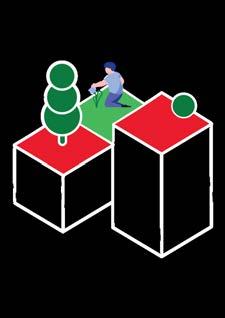


Advanced cases:
EC1 and New Centre Lodz
Friche la Belle de Mai Marseille

King’s Cross London
Industry City New York
Manifattura Tabacchi Firenze
Red Town Shanghai
22@ Barcelona
Union Quarter and Dortmunder U
Dortmund
Pilots: Amsterdam Science Park
Aleksotas Kaunas
Euston London
MIND Milan
Trafaria Lisbon
Zorrotzaurre Bilbao
NICE 2023 and Xinhua Community
Design Centre Shanghai
T-Factor is a EU Horizon 2020 project that seeks to unlock the transformative potential of temporary use in urban regeneration
Coordinated by ANCI Toscana, the project is a collective effort of many organisations across Europe and beyond, including cities, universities, businesses, and grassroots communities. Together, we are committed to create new knowledge, tools, and approaches to temporary use that can contribute to realise inclusive and thriving futures in cities
The project develops temporary use programmes within the realm of regeneration initiatives across Europe and China, harnessing culture and creative collaboration to prototype urban hubs of sustainability, social innovation, and inclusion Throughout this journey, T-Factor also leverages the experience of advanced cases of urban regeneration that have shown pioneering approaches to temporary urbanism. Working across both early and advanced regeneration initiatives, T-Factor ultimately aspires to foster sustainable and resilient communities, empower local stakeholders, and inspire global dialogue on the role of temporary use in shaping vibrant, equitable, and adaptable urban environments for generations to come.
T-Factor Consortium
ANCI Toscana
LAMA
PlusValue
University of the Arts London
Politecnico di Milano
Espacio Open Bilbao
LAND
Tecnalia
Aalborg University
Futuribile
Waag Futurelab
Kaunas University of Technology
Universitat Oberta de Catalunya
NOVA University
Bilbao Ekintza
La Friche la Belle de Mai
i-Propeller
London Borough of Camden
Università di Milano
TU Dortmund University
Municipality of Kaunas
Municipality of Dortmund
University of Lodz
Municipality of Lodz
Kaunas Fortress Park
Tongji University



 Stefano Baccelli
Councillor for Infrastructure, Mobility and Territorial Governance of the Tuscany Region
Stefano Baccelli
Councillor for Infrastructure, Mobility and Territorial Governance of the Tuscany Region
‘Across Tuscany, temporary use is far more than just an abstract concept. Recently integrated into our regional policies, this approach owes its rapid adoption to the Tuscany Region's proactive involvement in the T-Factor project. This project deeply explores the repurposing and revitalisation of unused public spaces and buildings - an innovative solution to meet our society's evolving needs. Participation in T-Factor has fostered exceptional international collaborations, reinforcing our commitment to embedding these practices within our territorial governance, thus promoting sustainable and inclusive regional development. At the heart of the project lies the goal of equipping our institutions with the necessary tools to address social, environmental, and economic challenges in innovative and bold ways. Our vision for urban development in Tuscany prioritises and supports the inclusive and equitable wellbeing of our citizens, advocating for the rational use of existing assets and urban regeneration as sustainable alternatives to land consumption. I wholeheartedly support the T-Factor project, whose principles of openness and extensive collaboration create new opportunities for revitalising urban landscapes. I am optimistic that these initiatives will not only succeed but also set new standards for transformative change across our cities and territories.’
 Matteo Biffoni President of ANCI Toscana
Matteo Biffoni President of ANCI Toscana
‘T-Factor has been and continues to be a key project for Anci Toscana
For us, it was an honour to lead it and coordinate an international collaboration that brought together such a diversity of partners around a shared challenge: that of reactivating and revitalising empty and dormant urban spaces for shared value Temporary use practices cannot only address immediate needs among citizens and residents, but also work as powerful practices for improving and realising local policies and strategic objectives of sustainable and inclusive urban development Manifattura Tabacchi in Florence is a virtuous example of how temporary use can spark renewal and regeneration processes after decades of abandonment and inactivity Time has come for policy and decision makers to endorse wholly new ways of making cities through collaboration involving the public, the private, and citizen sectors Temporary use provides a means to explore possibilities and opportunities, serving as co-creative testbeds for designing the present and future of our cities More than that, these practices can be a tool to embrace long-term thinking and collectively work for enduring change I personally followed the T-Factor journey and I was impressed by the spirit and passion that animated the project, an enthusiasm and capability that led to its success on an international scale I believe that international exchange and co-creation is essential for developing innovative and sustainable urban policies because only with the contribution of all cities, territories, and local urban policies can global objectives be achieved ’
 Workshop at Amsterdam Science Park
Photo credit: Futuribile
Workshop at Amsterdam Science Park
Photo credit: Futuribile
AN ALTERNATIVE TO RIGID, DETERMINISTIC, AND TOP-DOWN WAYS OF MAKING CITIES EXISTS.
TEMPORARY USE CAN MAKE URBAN REGENERATION PROJECTS MORE ADAPTIVE AND RESILIENT, LEADING TO MORE INCLUSIVE AND SUSTAINABLE OUTCOMES. THESE PRACTICES CAN NOT ONLY REVITALISE URBAN SPACES BUT ALSO CONTRIBUTE TO FOSTERING JUST TRANSITIONS ACROSS OUR CITIES.
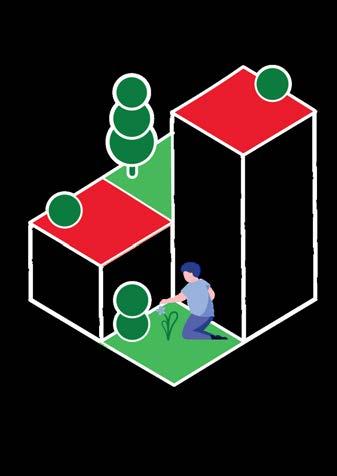
We are coming to terms with the pressure that the imperative of growth has put on planetary and social boundaries Biodiversity loss, rising temperatures, polarisation of wealth, mass migrations, and wars are overwhelming global phenomena. Avoidance is a vastly diffused coping strategy: for many, facing the truth, changing radically, and losing the present idea of comfort will be eventually a matter for the next generations, political mandates, and CEOs Those who actively participate in promoting change and advocacy navigate through a challenging terrain marked by avoidance and denial, frequently contending with ecoanxiety, burnout, and feelings of disempowerment, both on personal and collective levels
We believe that the solution rests in rising together as communities, fostering collective momentum for transformation, and demonstrating through tangible examples that making change collectively is not only achievable but imperative.
The multiple crises we face are an opportunity to re-envision our societies and relationships to the Earth Cities are home to the vast majority of the global population, and this is particularly the case for Europe. As coexistence is an inescapable condition in cities, we argue that this is where such a collective vow to change should be put into motion
But where and how do we begin enacting change and making it tangible and stimulating for citizens, entrepreneurs, and policymakers? Urban areas that are already undergoing transformation and regeneration offer a perfect context. The challenge they face - how to transition to new identities, uses, significances, and infrastructural features that are sustainable and welcomed by citizens and businesses - is a hyperlocal version of the global need for a radical change of paradigm.


Against the rigid and deterministic approaches that have often characterised many urban renewals across Europe, temporary uses offer a viable alternative to city-making at times of uncertainty and rapid change. Addressing challenges such as social and cultural deprivation, loss of green and public spaces, economic downturn, and spatial segregation, temporary participatory temporary urbanism: the creative and collaborative process of shaping and crafting places during phases of urban transition and redevelopment, as a laboratory for the future of cities and, consequently, of the Planet.
interventions often act at the heart of the problems that urban regeneration is (or should be) called to solve, accelerating time to change and to the creation of co-benefits. Temporary uses play a significant prefigurative role and can facilitate the development of the imaginaries and capacities necessary to foster sustainable and inclusive change.
Due to their temporary and typically small-scale nature, these practices can offer reassurance: they provide a means to rapidly prototype the future of urban areas in a participatory manner, allowing to learn and build iteratively through successes and failures. In short, they stand as explorative environments for change.
For four years (2020-2024), we conducted the EU T-Factor project in six pilot areas under regeneration across European cities: Amsterdam Science Park, Aleksotas Kaunas, Euston London, MIND Milan, Trafaria Lisbon, and Zorrotzaurre Bilbao. Parallel research and innovation efforts have also been undertaken in two areas in Shanghai (NICE 2023 and Xinhua Community Design Centre), funded by the Ministry of Science and Technology of the People's Republic of China as part of the EUChina collaboration in Horizon 2020.
Prior to concrete experimentation with temporary uses in these areas, T-Factor conducted research activities on eight advanced cases of temporary use in urban regeneration, namely: King’s Cross in London, EC1 and New Centre in Lodz, Industry City in New York, Friche la Belle de Mai in Marseille, Manifattura Tabacchi Firenze, 22@ Barcelona, Red Town in Shanghai, Union Quarter and Dortmunder U in Dortmund
Within each pilot area, local coalitions involving different stakeholders from the public, private, and citizen sectors envisioned a set of thematic
1
missions as design briefs for cocreative temporary uses Spanning missions such as greening, renaturing, and rebuilding collaborative human-nature relationships; fostering conviviality and community cohesion; advancing collaborative and participatory governance; among others, each pilot context has worked as a ‘lighthouse’ of how temporary uses can be applied during phases of urban regeneration to unleash inclusive and equitable quality of life
We organised our work around developing first a number of exploratory thematic probes blending local and international expertise, which later evolved into more complex and in-depth temporary interventions in each pilot city
The challenges and lessons that emerged alongside this process converged around some major themes, like ensuring community engagement and trust, continuous adaptation and learning, interdisciplinary collaboration, dealing with complexity, and developing novel visions of urban ecology
For more information about the T-Factor’s pilot cities and advanced cases, see: https://www.t-factor.eu/ 1
From this work on the ground, which in many cases challenged our initial assumptions, we distilled six thematic axes of work - or inspiring missionsfor temporary urbanism that we propose here as guiding directions of work with an empowering potential for change.

Time is one of the main factors mankind has always struggled with We often contrast the passage of time as individuals, and we struggle with it as our cities increasingly face disruptive change. Time is also a major opponent in the rush toward carbon neutrality However, time is not necessarily against us if we begin to move away from short-term thinking
Temporary uses offer a means to embrace long-term thinking and develop agile strategies for uncertain futures. Amidst feelings of urgency, fear, and anxiety, particularly among the youth and vulnerable populations, these practices can serve as city-scale platforms for collective action and capacity-building throughout urban transformation pathways Temporary uses can act as bottom-up trials and prototyping testbeds for urban uses and identities, enhancing resilience and adaptation of redevelopment plans and processes. Overall, these practices can shape a wholly new approach to urban regeneration, ushering in a novel form of citymaking that is about crafting collective movements for change.
With this book, we aim to showcase how temporary uses can be concretely leveraged during urban redevelopments towards sustainable, inclusive, and equitable cities. By offering a curated systematisation of temporary uses and placemaking practices developed by the T-Factor project, we seek to inspire actions and share insights on how urban regeneration can become a participatory lab for addressing the major challenges of our time. The examples and case studies covered in this book are all place-based; typically ‘small’ in scale and scope; and rooted within peculiar challenges and opportunities linked to the specific contexts under regeneration However, especially if considered and understood together as a constellation of ‘many distributed and connected experiments’ , they can offer viable possibilities for enacting temporary initiatives in response to global challenges, and begin to address them through local collective action.
By sparking and cultivating bottom-up action through temporary use, we believe we can transform urban regeneration from within - catalysing long-term policy-making and investment for sustainable, inclusive, and equitable cities.
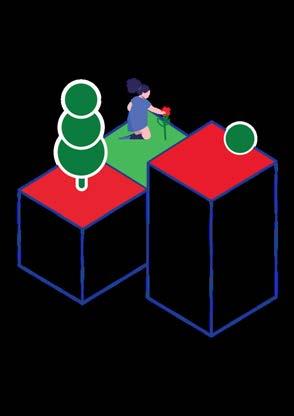
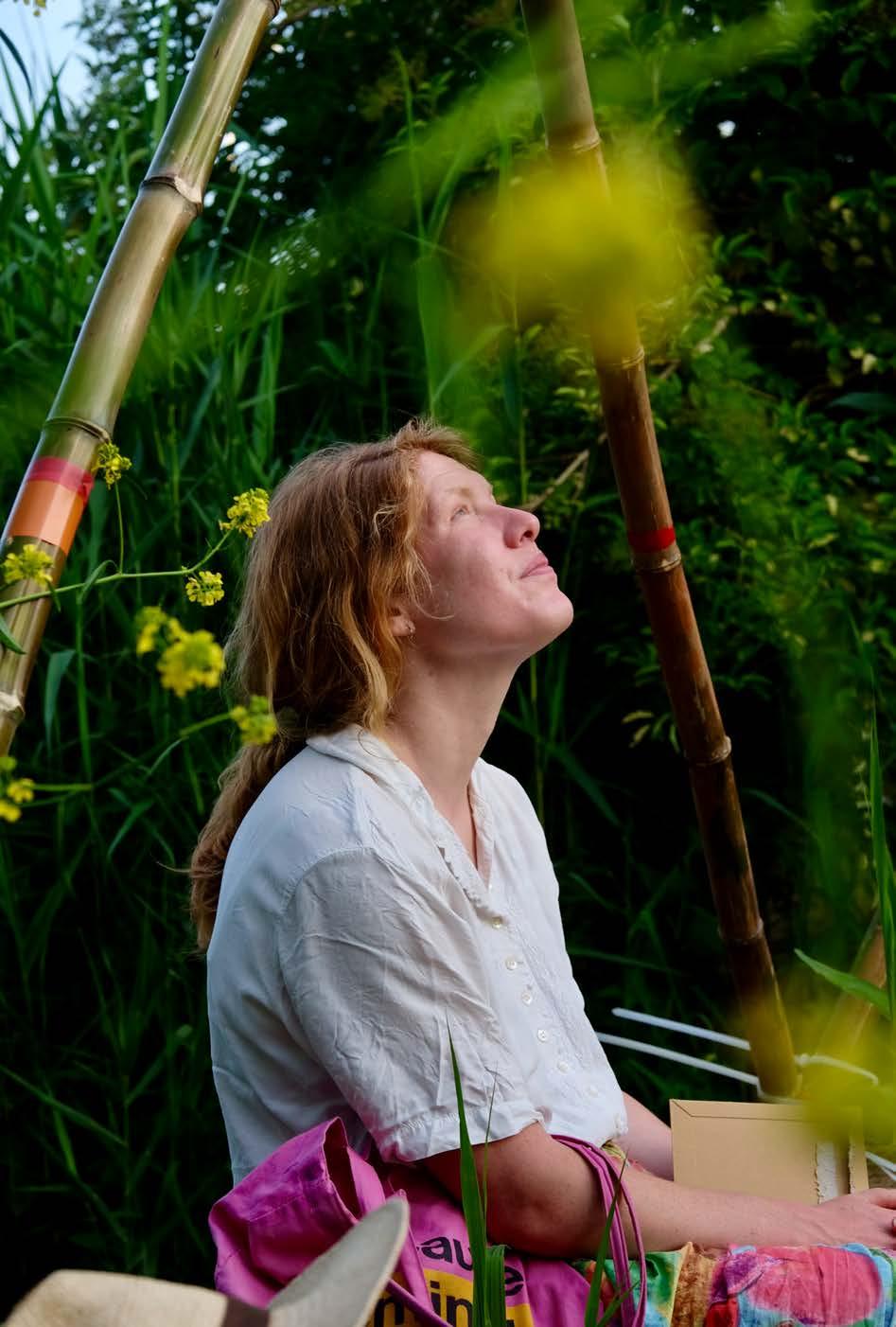 Landscape Festival at Amsterdam Science Park.
Photo credit: Waag Futurelab
Landscape Festival at Amsterdam Science Park.
Photo credit: Waag Futurelab

Under the pressure of growing urbanisation, spatial optimisation becomes a pressing need for cities
Vacant lots and buildings, underused areas, and abandoned facilities are luxuries that are no longer affordable or acceptable, especially vis-à-vis the rising number of people who cannot even afford shelter.
Urban regeneration - the repurposing and renewal of deprived, underutilised, or outdated urban areas and infrastructureexperienced a boom in the 2000s, driven by large public-private partnerships striving to transform entire city areas. Many redevelopment projects grappled with integrating historical sites, particularly those with industrial or military pasts or marked by recent political conflicts. Some encountered difficulties establishing a compelling identity for areas lacking a clear purpose or functioning as transition zones, such as temporary event sites or waterfronts. Many projects have also exacerbated deprivation and exclusion for already marginalised individuals and communities, especially those forced to relocate or unable to afford the disruptions brought by gentrification
URBAN REGENERATION
Urban regeneration refers to the range of strategies and interventions aimed at renewing and revitalising urban areas grappling with deterioration, obsolescence, and neglect It involves a multifaceted approach aimed at enhancing physical infrastructure, fostering economic and socio-cultural vitality, and improving the overall quality of life and well-being for residents
Recognising that cities are more than just their buildings, urban regeneration has undergone a significant evolution over time, shifting from a primary focus on hard infrastructure to encompassing softer dimensions Contemporary understanding acknowledges the importance of holistic approaches that consider socio-cultural, economic, and environmental aspects in fostering sustainable urban development
This shift has contributed, among other factors, to expanding the range of stakeholders involved in urban regeneration efforts, increasingly staging complex public-private partnerships to better address the risks and uncertainties of urban regeneration projects


Regenerating cities is a systemic and increasingly risky challenge No matter how well we design plans and processes, urban regeneration typically confronts an intricate web of factors, including economic feasibility, stakeholder conciliation, political and business agendas, citizen expectations, and more. Functions that seem necessary or urgent in the present, such as car parking, can quickly become obsolete. Additionally, globalised aesthetics often inform designs that create uniform urban experiences devoid of identity or history. Too often, we build and regenerate at the expense of nature and biodiversity, despite these being foundational resources for human thrivability Furthermore, in our interdependent world, systemic
shocks from wars and pandemics can abruptly halt redevelopment efforts, causing harm to entire chains of investors, professional studios, construction enterprises, workers, and citizens. Continuously, we risk designing urban spaces that cater to the few, while a growing number of people struggle to meet even their basic needs.
Indeed, no magic formula or onesize-fits-all solution exists.
If we aim for deep and enduring urban regeneration, we must begin to recognise that this is an iterative process marked by continuous experimentation, learning, and adaptation - moving away from rigid and top-down approaches, as well as from the search for short-term results.
Temporary use typically unfolds through incremental and iterative processes involving mapping and exploration, community engagement, rapid place prototyping, adjustment and iteration. Despite their temporary and typically small-scale nature, these practices are much more than an ephemeral form of animation or a stopgap measure to fill empty or dormant spaces. Leveraged within broader, longterm plans and strategies of urban regeneration, they offer a flexible way to better address and mitigate the challenges and risks associated with uncertainty and rapid change. As participatory labs of co-creation and co-production, temporary uses provide a form of collective action in response to global issues, placing the local communities and their wisdom at the forefront.
Whether it is community gardens, neighbourhood kitchens, recycling facilities, maker spaces, or bottom-up museums - among many other examples - temporary uses often work as ‘windows of opportunities’, demonstrating creative and socially innovative ways to responding to issues such as deprivation, loss of green and public space, and lack of basic services. Most crucially, temporary use offers ways to weave people in places through adaptation and flexibility, deliberately inquiring into the ever-changing relationships, values, concerns, cultures, and time spans that make up our urban fabrics By emphasising processes more than outcomes and results, temporary use is ultimately a means to embrace complexity and interdependence, fostering empowerment and capacities to transform urban regeneration into a ground of collective learning and resilience to change.
 Mapping activities in Zorrotzaurre, Bilbao.
Photo credit: Stella Zoe Schimdtler
Mapping activities in Zorrotzaurre, Bilbao.
Photo credit: Stella Zoe Schimdtler
This is a key learning from our journey in T-Factor, an approach that stems from experience and which we hope other stakeholders can benefit from. We embarked on the project with our own assumptions and theories of change on how temporary use could address local urban challenges and accelerate the time to positive impact. We initiated the journey with an array of thematic challenges that we intended to explore through temporary use practices in six urban regeneration areas across Europe, also drawing from the insights of advanced case studies As we delved deeper into the local contexts and began engaging with communities on the ground, our initial plans sometimes aligned, while other times they failed to meet real needs, necessitating adaptation and evolution Over time, some thematic challenges proved relevant and urgent, while new ones emerged. Overall, T-Factor proved to be a journey of discovery rather than a path with established milestones, continually challenging us to reassess design choices and strategies.


As part of our learning and legacy, this book crystallises six thematic areas of work - or ‘transformation missions’ - for temporary urbanism These missions ultimately emerged as viable courses of action for addressing contemporary urban challenges, drawn from our experience and learning in T-Factor. They encapsulate valuable insights and practical approaches that we believe other stakeholders can leverage to navigate their own paths toward positive urban transformations
#1 Greening, biodiversity and urban wilderness - Cities as living ecosystems. Exploring ways for temporary uses to cultivate new understandings of humans’ entanglements with urban nature, and foster more collaborative and respectful relationships that allow people and nature to thrive together.
#2 Circular and regenerative practices - Cities as regenerative and low-footprint environments. Within this theme, we explore how embracing circularity within temporary use can contribute to diminishing cities' environmental footprint, transitioning from resource exploitation to resource regeneration while strengthening social bonds
#3 Cross-sectoral alliances for new knowledge and skills - Cities as co-creation hubs. Within this theme, we advocate for utilising temporary use as a platform to forge unconventional partnerships and harness the city's potential as a collaborative hub for knowledge co-creation.
#4 Local identity and heritage - Cities as living histories. This theme calls to approach heritage as a living resource and reconnect it with contemporary practices to craft local identities encompassing past, present, and future.
#5 Safety, conviviality and liveability - Cities as everyday pleasures. This theme champions the significance of joy and conviviality, often overlooked, in enhancing the liveability and pleasantness of urban environments
#6 Inclusive engagement & rights to cities - Cities as places for all. This theme advocates for leveraging temporary use as a platform to transform the city into a catalyst for inclusion and social justice, championing and advancing principles of inclusivity, accessibility, and the rights to cities.
These missions are broad enough to mobilise imaginaries but also concrete in the ways temporary use can endorse and contribute to addressing them within the realm of urban regeneration.
Each mission chapter follows a funnel structure, providing first a brief and non-exhaustive overview of core policies and initiatives at the EU level that provide a reference framework, and further surfacing opportunities and challenges for urban regeneration to address the mission in question. Drawing from our own journey in T-Factor, we then delve into the key contributions that temporary use can provide toward action on the ground and realisation of benefits for each mission, including by listing concrete examples, as well as by highlighting key learnings from our experience. Each mission is also complemented with an orientation tool meant to serve as a checklist for working on the mission. Furthermore, a few T-Factor case studies for each mission provide more in-depth descriptions and practical insights on specific temporary uses and experiments explored throughout the project.
At the conclusion of the book, we reflect on the overarching lessons and key highlights from our journey These insights are intended to serve as points of discussion and action for practitioners and stakeholders already engaged in temporary use, as well as those interested in exploring this approach
Importantly, some remarks are necessary here for reasons of clarity and accountability:
Terminology At the European level, the discourse surrounding temporary use involves diverse practices, policymaking, and research, with a general lack of standardised terminology Terms like 'temporary use,' 'interim use,' 'pop-up use,' 'transient use,' and 'meanwhile use' are often used interchangeably and with nuanced meanings, making it hard to rely on rigid categorisations. In this publication, we primarily utilise the terms 'temporary use' (sometimes abbreviated as ‘TU’) and 'meanwhile use' interchangeably to denote temporary projects and interventions occurring within the context of urban regeneration interventions
Approach. Urban regeneration is a complex and evolving field that is increasingly being studied by researchers and experts in various domains. The arguments laid down in this book are certainly non-exhaustive of the landscape of challenges and opportunities in the field, being limited to the ones that mostly resonate with our experience in T-Factor Moreover, these are synthetically presented, particularly for reasons of conciseness.
Temporary use practices
Examples of temporary use practices mentioned across the missions’ chapters draw from our experience in TFactor and reflect an attempt of systematisation within the scope of the project itself. Practices across European cities and beyond are indeed many and much more varied than described here.
Thematic Missions The six missions are interconnected and not intended to be viewed in isolation. They are the result of iterative exploration in the project, and are grounded in local experiences rather than imposed topdown categorisation. Additionally, the case studies may be relevant to multiple missions but are primarily associated with the one that aligns most closely with the pilot's local objectives and journey
We invite you to read and explore this book as a ‘glance at possibilities’ to make urban regeneration more inclusive, sustainable, and socially innovative. If you are a practitioner, you can find examples and inspirations to enrich your local action, as well as insights and learnings on some important points when applying temporary uses in response to thematic missions If you are a developer, you are certainly familiar with the opportunities and challenges covered in this book, and yet it can help you understand how temporary use can add quality and value to urban regeneration projects Similarly, if you are a policymaker, you can find arguments and examples of how temporary use can help endorse and realise objectives of just transitions and inclusive growth in cities If temporary use is one of your research fields, you may find elements and points for further investigation and in-depth analysis.
We ultimately invite you to approach temporary use as a ‘stable’ practice of inquiring into, and learning from your local context. In T-Factor’s experience, even when you think you know, you can know better. And it evolves daily. We believe the point is not about ‘use’ and ‘space’, but is rather ‘time’: by operating across different time spans and types of spaces, in response to various missions, and by engaging diverse publics and communities, temporary use can transform the ‘time factor’ in urban regeneration into an asset, offering a unique opportunity for collective capacity-building, agency, and legitimacy to change.

As a society, we are increasingly aware of the deep ecological crisis that humanity is imposing on the Planet. Yet, the sense of urgency to action that such awareness should bring about is not evenly widespread Our very relationship to nature is at the heart of this crisis, which is rooted in the dualism between humanity and nature developed in modernity, and in the belief in humans’ exceptionality compared to other living beings
There is no prosperous future without radically changing this belief across societies and economies. Humans must switch from mere harvesters and exploiters to custodians and nature’s fellows. To do so, we must begin to embrace a key principle: all living beings are interconnected and interdependent, and should be equally valued as fundamental parts of the intricate web of life on Earth.
Cities must become the testbeds for the shift towards an ecological society, both in their infrastructures and in the mindsets of their inhabitants Considering that three-quarters of its citizens live in cities, this paradigm shift is particularly compelling for Europe Greening cities does not only contribute to climate goals by reducing their footprint on the Planet and enhancing local biodiversity It also builds local resilience in the face of rising climate hazards like heat waves and floods Furthermore, cities with a higher degree of flora and fauna can improve citizens’ quality of life and well-being, acting as a preventative health measure for obesity, depression, respiratory pathologies and other diseases. This symbiotic relationship transforms cities into havens of interspecies well-being. Additionally, regular exposure to nature in urban environments fosters a deeper connection to the natural world, a vital component of ecological education and behavioural change
Under the European Green Deal's overarching goal of reaching climate neutrality by 2050, the EU has recently developed a series of comprehensive policies for enhancing urban nature and biodiversity Sustainable use of land and nature-based solutions (incorporating nature and ecosystems into urban planning) are part of the priorities of the Urban Agenda for the EU. As part of the European Green Deal, the Biodiversity Strategy for 2030 includes actions to integrate nature into urban areas Prizes like the European Green Capital Award and the European Green Leaf Award reward cities for their efforts in promoting sustainability and environmental consciousness. The Covenant of Mayors encourages local authorities to commit to climate and energy objectives Sustainability is one of the three pillars of the New European Bauhaus initiative, which calls Europeans ‘to imagine and build together a sustainable and inclusive future that is beautiful for our eyes, minds, and souls’ . Furthermore, the EU Mission on Climate neutral and Smart Cities by 2030 sets an ambitious plan for the sustainable future of cities across Europe, including by supporting public-private-people investment in greening and renaturing at scale and scope From the implementation of green infrastructure strategies to biodiversity conservation, these initiatives exemplify a concerted effort to strike a balance between urban growth and ecological thrivability. By championing sustainable development principles, the EU aims to cultivate cities that are not only economically vibrant but also environmentally conscious, healthy, and socially inclusive.
The co-benefits of urban regeneration efforts rooted in greening and biodiversity are increasingly documented and demonstrated Spanning aesthetic appeal and comfort, provision of ecosystem services like air purification and stormwater management, mitigation of heat islands effects and absorption of carbon dioxide, and contribution to preventative health and wellbeing are some amongst the key contributions that green spaces can bring for enduring quality of life - for people and other living organisms. These initiatives not only enhance the liveability of ur o foster resilience and adaptation in the face of climate change, promote social cohesion, and support economic growth through the creation of green jobs and increased property values Furthermore, they play a vital role in preserving and restoring natural habitats, safeguarding biodiversity, and ensuring the long-term sustainability of cities for present and future generations
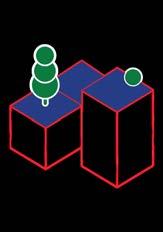
Despite these benefits, embracing greening and biodiversity in urban regeneration efforts encounters several challenges. Competing demands for limited urban space can result in prioritising commercial development over green infrastructure Inadequate funding and resources may hinder the implementation and maintenance of green projects, leading to their gradual degradation over time. Moreover, urban sprawl and fragmented land use patterns pose obstacles to creating contiguous green spaces necessary for supporting diverse ecosystems and wildlife habitats Furthermore, engaging and mobilising diverse stakeholders, including local communities, can prove challenging due to conflicting interests and priorities Lastly, embracing the goals of urban greening and biodiversity extends well beyond physical and infrastructural interventions Rather, it entails a cultural shift which involves enhancing the perception of flora and fauna and foregrounding their role in the everyday life of citizens, in political agendas, and investor plans Therefore, promoting ‘green objectives’ in urban regeneration should incorporate intangible interventions, such as raising environmental awareness, fostering frequent and deeper connection to nature, and cultivating an aesthetic appreciation of the natural world among citizens, while also integrating non-human elements into the local community
Expanding the notion of place to encompass non-human elements represents a significant opportunity for temporary initiatives to contribute to greening and biodiversity objectives Ecological placemaking can play a vital role in fostering nature’s regeneration and thrivability, promoting and championing greening through communities of practices and communities of place’s approaches. This may involve engaging citizens with nature through collaborative forms of biodiversity mapping and monitoring, hands-on workshops, immersive observations and explorations, artistic interventions, educational programs, nature festivals and other types of public events - laying the ground for a culture that values and champions deeper connections and collaborative human-nature relationships Temporary uses can work as testbeds where nature becomes an innovative groundwork for individual and collective capacity-building, and ultimately for new forms of social and ecological citizenship With increased environmental awareness and practical ecological skills, citizens are more likely to support large-scale greening projects and become active participants in the long-term stewardship and care of green spaces.

Drawing from our experience in T-Factor, below is a non-exhaustive list of possible areas of intervention for temporary use under this thematic mission:
Biodiversity mapping & monitoring: developing creative and engaging forms for exploring and mapping biodiversity in urban regeneration areas, fostering ‘art of noticing’ and appreciation of natural resources, promoting citizen science approaches, and creating do-it-yourself artefacts (e.g. bees and bugs hotels) and digital platforms that help monitor and showcase local flora and fauna
Traditional green spaces: creating new or preserving/restoring green spaces such as parks, public gardens, and green corridors These interventions can bring about both environmental (improving air quality, raise biodiversity, mitigate heat waves) and social benefits (provide space for recreation, relaxation, and social interaction, increase nature-connectedness and raise environmental awareness)
Urban wilderness areas: establishing designated pockets of urban wilderness that exhibit characteristics of landscapes where human intervention is minimal or absent These spaces provide habitats for diverse species and create opportunities for residents to connect with nature
Well-being hotspots: testing spatial artefacts and place designs that promote wellbeing for individuals and other living organisms, for example by means of nature-based solutions and sustainable materials to explore new sound and light-scapes.
 Multispecies living room at Amsterdam Science Park.
Multispecies living room at Amsterdam Science Park.
Urban agriculture: creating or revamping plant nurseries and vegetable gardens. These areas provide a degree of local self-subsistence, contribute to CO2 emissions capture, and support the promotion of healthy and sustainable nutrition
Hands-on workshops: organising workshops, seminars, or other learning sessions on topics related to sustainability, environmental conservation, urban gardening, and green building practices to equip individuals and communities with knowledge and tools for endorsing and advancing greening and biodiversity objectives
Nature’s festivals and exhibitions: developing events that celebrate and champion greening and nature, engaging citizens in a collective discovery of possibilities for making cities greener and sustainable.
Community engagement and stewardship: involving residents, local communities, and stakeholders in experimental activities of planning, development, maintenance, and governance of green spaces, fostering a sense of ownership, environmental stewardship, and collaborative care of green assets and infrastructure
‘Slow’ rhythm of nature. Despite meticulous planning, there is a natural process of adaptation, regeneration, and growth that must occur for green areas and biodiversity initiatives to thrive Failing to recognise this temporal dimension can
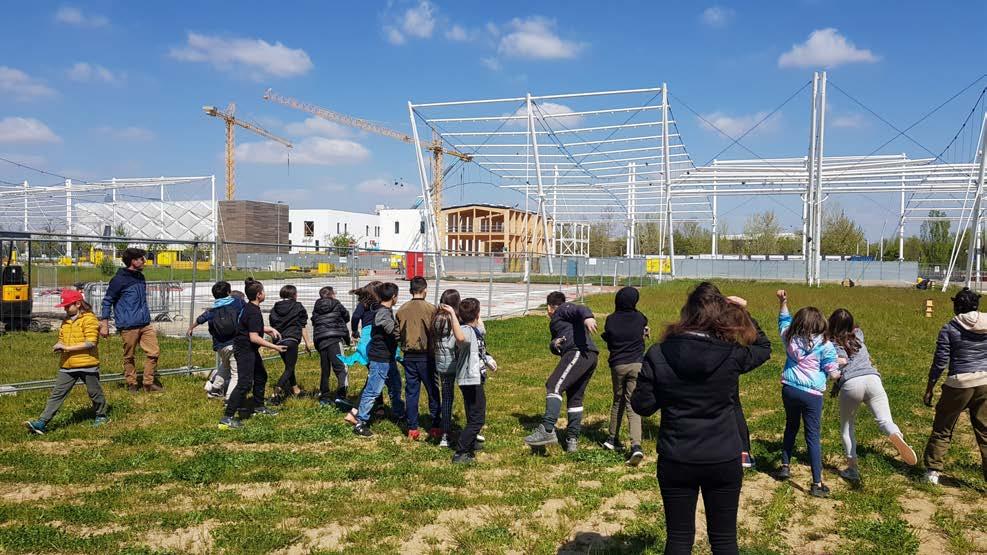
lead to dashed expectations, loss of investor confidence, dwindling citizen support, and strained partnerships, undermining long-term goals.
Temporary greening interventions can effectively bridge this gap by initiating small-scale projects that foreshadow larger, long-term initiatives and by mobilising citizens to activate underutilised green spaces.
Urban Ecology Engagement. Engaging citizens in urban ecology initiatives can be challenging, particularly for those who are not already sensitised or interested in these topics Supporting existing 'green' communities and packaging together diverse interventions that leverage different spaces and time spans (for example, through summer festivals) can be effective strategies to overcome engagement inertia Moreover, prioritising practical and hands-on experiences over theoretical activities may help increase attractiveness and engagement.

Feasibility of green interventions. Regulatory barriers to accessing space for green interventions, coupled with the rapid pace of construction works, can impede timely implementation and compromise the viability of green initiatives To mitigate these challenges, strategic planning and operational flexibility are key Implementing temporary green initiatives in areas less susceptible to sudden removal due to construction, or opting for movable green installations adaptable to evolving site needs, can help ensure continuity and minimise disruptions Moreover, initiating early conversations with key regeneration stakeholders is essential for identifying potential hurdles that may undermine bottom-up green interventions
Monitoring and evaluation. Assessing the results and outcomes of temporary green interventions is particularly important for informing and influencing highlevel decision-making and support Collecting data on usage patterns, ecological outcomes, community perceptions, and providing living information on biodiversity on site can enhance momentum for financial and political investment in greening through temporary use
Governance and legacy of green spaces. Neglecting to plan for the long-term management and legacy of green spaces can undermine positive achievements and ultimately lead to frustration and a sense of powerlessness among citizens Plans for long-term governance and proactive actions of advocacy and fundraising can help secure key conditions for legacy. Creating local ‘green coalitions’ involving a diverse range of stakeholders can help build consensus, foster ownership, and increase opportunities for temporary initiatives to turn into more permanent features within redevelopments.
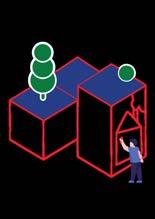

When designing a temporary use on Greening, Biodiversity & Urban Wilderness, consider the following elements as possible points of departure or reflection
Landscape designers; ecologists; nature educators; urban farmers; area/city green space managers; sport/movement educators; neighbourhood observers and ecological communities.

Type of spaces
Brownfields; rooftops and vertical gardens; green pockets and corridors; wetlands, ponds and other blue spaces; urban farms, wild zones/pockets

Community building; raise awareness about healthy lifestyles; ecology education; generate ideas for long-term planning; enhance knowledge of existing flora and fauna; increase the small species population (e g pollinators), enhance the percentage of green spaces in the area through moveable structures

Increase the attractiveness of the area; establish novel green areas; improve sustainability and climate resilience of the area; foster biodiversity; promote health & wellbeing; support nature and socially engaged lifestyles.

Invade green areas with an excess of human activity; use unsustainable and/or pollutant materials for temporary infrastructure; lack of monitoring systems; grow edible plants on polluted soil; engagement limited to people already sensitised/engaged in green practices.
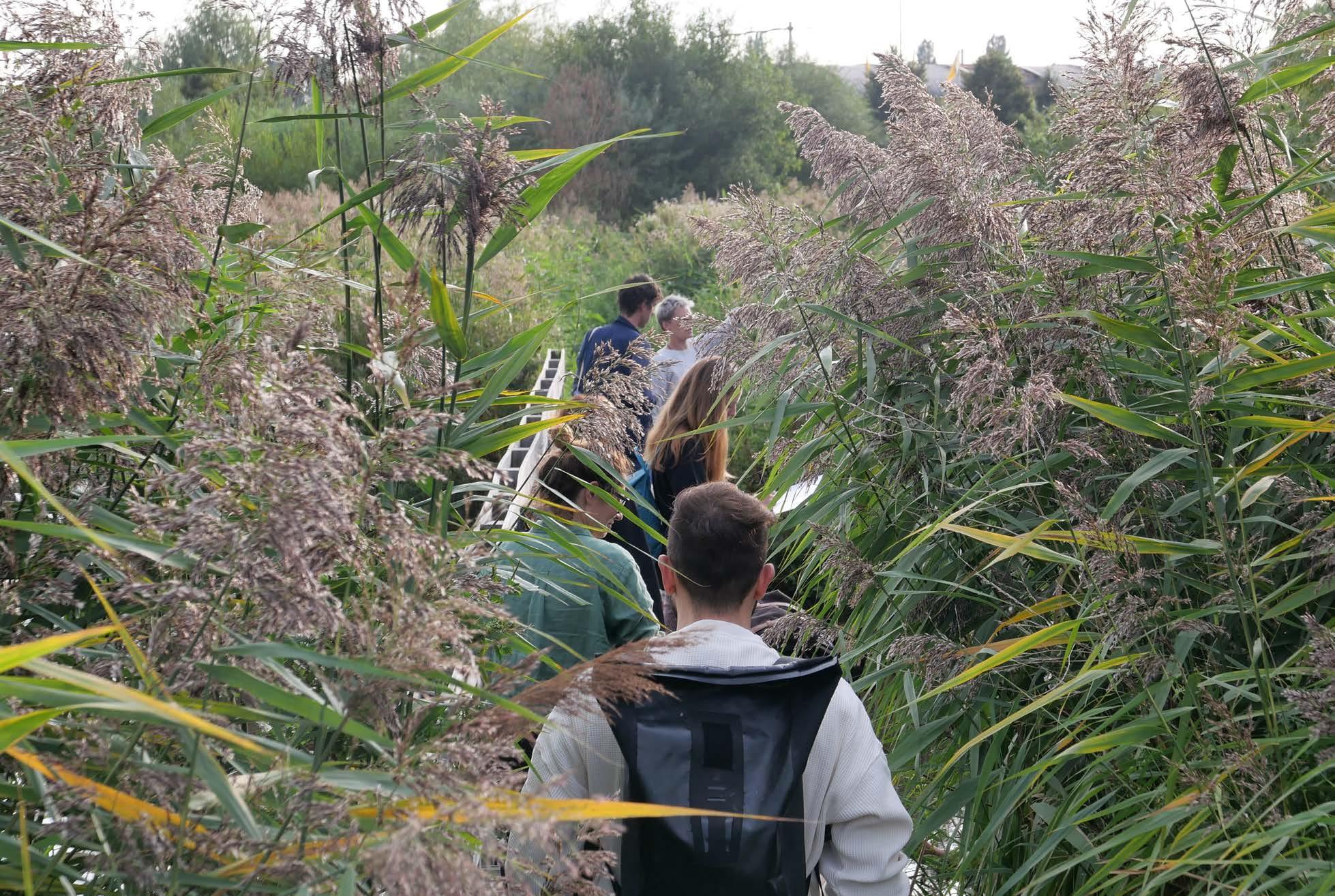

Where: Amsterdam Science Park, Amsterdam (NL)
When: February-September 2023
Partners & Collaborators: Futuribile, Waag Futurelab, LAND, Amsterdam University College, Aalborg University
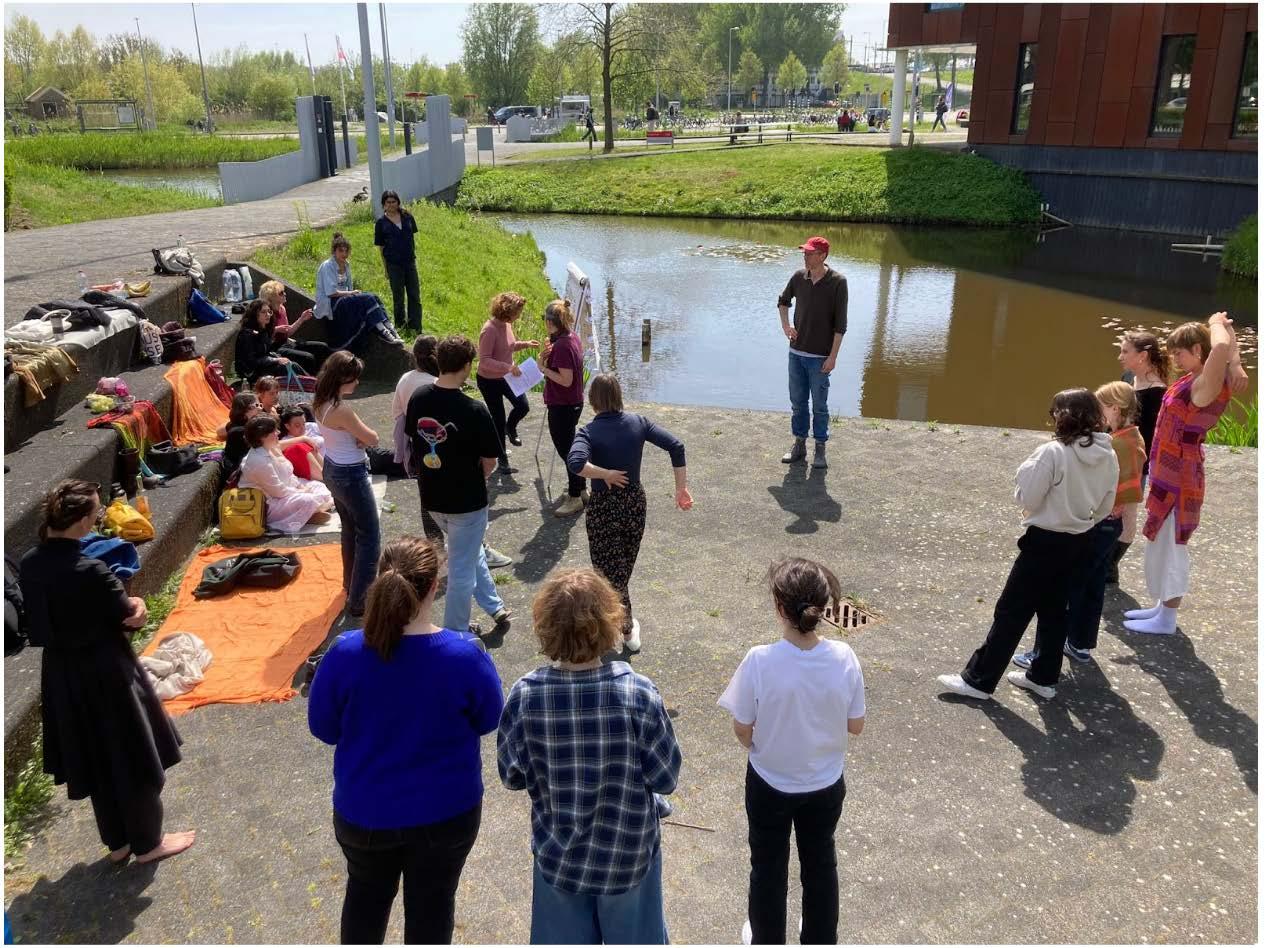
place at the premises of Amsterdam University College in Amsterdam Science Park in the 2023 second semester Students from the Anthropologies of Community course by Prof Scott Dalby attended a series of workshops aiming to create a temporary Wild Spot within a neglected green area on the campus. The initiative aimed to cultivate a physical hotspot fostering individual and community connections with nature The project took place around a pond, in an underutilised area mixing green and concrete Originating from a critical view of the digital landscape in cities, the Wild Spot process levers nature and the intentional use of attention to connotate urban wilderness areas as restorative spaces away from the
cognitive burden of the digital everyday. The cycle, structured as an experiential learning path about ecology, nature-based well-being and co-design, resulted in 12 nature-based installations (i.e. pollinators' garden, insect hotel, nature observation station) and 10 community events (e.g. nature at the microscope, outdoor meditation, cooking with wild herbs), presented at the local landscape festival. The installations stayed up until September 2023. At the time of writing this publication, the green area managing entity is exploring how to turn some of the ideas into permanent facilities. As a legacy, the Wild Spots NGO was funded in Paris by Wild Spot initiator Futuribile with the mission to promote nature connectedness as a well-being and ecological education resource.
SIGNIFICANCE While the scientific evidence supporting the link between nature and well-being is robust, it remains underexplored within urban planning paradigms Initiatives focused on enhancing public awareness of nature's profound impact on health, as well as fostering stewardship, hold immense potential for improving public health outcomes by promoting wellness, preventing illness, and supporting rehabilitation efforts Moreover, nurturing a sense of connection with the natural world through such initiatives can catalyse the shift towards more sustainable behaviours Through collaborative efforts to reimagine temporary uses for green spaces, participants can address issues of belonging, individual and community well-being, species coexistence, and accessibility This process empowers them to become agents of change within their local communities Moreover, on a masterplan level, such experiences help identify citizen needs and usage proposals that can inform future development projects for the area
12 Nature-based installations
10 Community events
3 Months of publicly available installations
1 Spin-off NGO created
Where: Amsterdam Science Park, Amsterdam (NL)
When: February-September 2023
Partners & Collaborators: Futuribile, Waag Futurelab, LAND, Amsterdam University College, Aalborg University
Target groups: local communities, city makers, university students
Type of space: green and blue areas
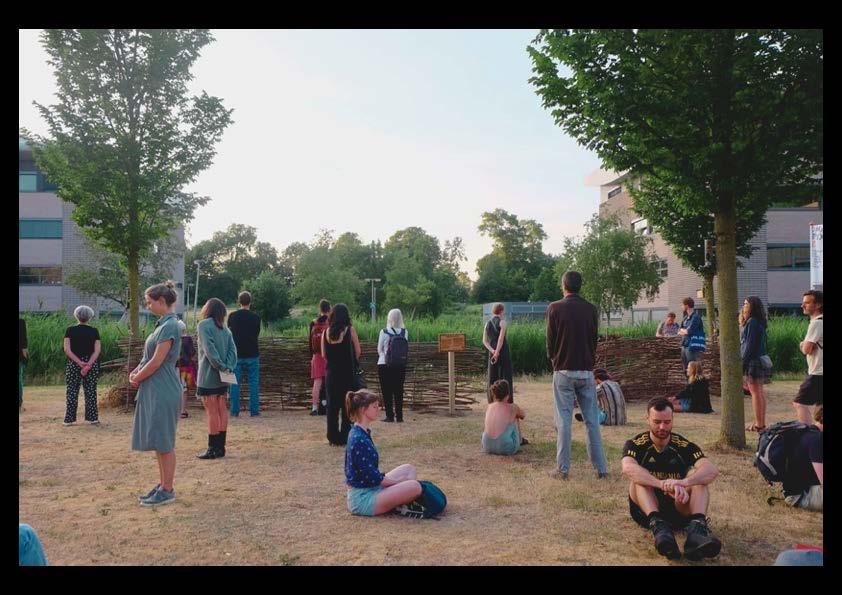
THE EXPERIENCE During Summer 2023, the Landscape Festival Met Andere Ogen (“With Other Eyes”) unfolded at Amsterdam Science Park Collaborating closely with local communities, researchers, artists, and students, the festival saw the creation of seven biodiversity interventions This co-creative initiative aimed to foster a renewed relationship with nature while carving out space for it within urban planning, thereby promoting local biodiversity. The festival served as a strategic platform to bolster existing green initiatives within the community It encouraged residents to perceive their surroundings from a 'more-than-human' perspective, offering inspiration for both individuals and municipalities to prioritise biodiversity Furthermore, the festival's approach facilitated collaboration among stakeholders at the masterplan level. In the initial phase (May-June), the seven interventions were constructed in tandem with community involvement.
A participatory walk held during the Summer solstice of June 2023 showcased the ecological installations and experiences crafted by artists and designers during the preceding months. In the second phase, participants stepped back to allow nature to flourish, while the interventions were integrated into a guided tour throughout the science park. Visitors were encouraged to immerse themselves in the park's living ecosystem, gaining multifaceted perspectives on its diverse inhabitants and enjoying it as a vibrant, interconnected environment.
SIGNIFICANCE The Landscape Festival is an example of a green-led temporary practice that helps activate and join efforts and resources among communities and groups involved in ecological initiatives Through its capacity to generate momentum, the festival has successfully heightened visibility for the diverse ecological practices underway within the park, often previously operating in isolation Its distributed format, unfolding across both time and space, empowers local residents and dwellers to engage with the event at their own pace, facilitating the discovery of fresh perspectives and the reimagining of their relationship with a familiar environment The format also makes it easier for policy makers to implement/give permission due to the temporary nature of the interventions Overall, the festival serves as a catalyst for community engagement, fostering connections, and nurturing a deeper appreciation for the natural world within urban landscapes
Where: Xinhua Community Design Centre, Shanghai (PRC)
When: 2022 - ongoing
Partners & Collaborators: Tongji University Ecology and Cultures Innovation Lab and Fablab O Shanghai
Target groups: residents and citizens at large
Type of space: green pockets, community garden, rooftop garden

THE EXPERIENCE In 2022, the Shanghai Urban Ecology Lab was established within the Xinhua Community Design Centre (Xinhua CDC - ), representing a collaborative effort between the local government of Changning district, the social enterprise Da Yu Studio, and the community of residents. This initiative seeks to promote education programs on urban ecology through participatory methods, fostering a deeper understanding of ecology among citizens Through activities such as mapping urban biodiversity, collecting ecological data, fabricating ecological interactive devices, and experimenting with biomaterials, citizens are actively involved in scientific exploration A key aspect of
this initiative is the creation of a catalogue of ecological participation, serving as a collaborative platform where citizens and researchers can work together to improve ecology at the neighbourhood level. Additionally, the lab hosts a residency design program within the community, facilitated by the Urban Ecology Lab at Xinhua CDC. This program serves as an ongoing initiative for ecological regeneration within the city, engaging citizens in both knowledge and practical applications of urban ecology. Moreover, the Urban Ecology Lab operates in a network with other Urban Ecology Design Labs around the world. While these initial activities have successfully engaged citizens, there is still room for further development to fully realise their educational potential. The next phase of the project aims to structure a participatory education model able to function within formal school settings and informal community environments.
SIGNIFICANCE The Urban Ecology Lab serves as a successful example of how urban ecology can bring together different stakeholders in a collaborative effort to protect and regenerate nature and biodiversity at neighbourhood level This collaborative initiative, involving local authorities, social enterprises, and community members, underscores the significance of collective action in addressing contemporary environmental challenges, and promotes the role of urban nature as a drive of regeneration practices

The 20th-century economy prioritised immediate profit, pushing heavily on planetary limits and causing depletion of natural resources, greenhouse gas emissions, habitat loss, and pollution To address these urgent challenges, we must shift to a regenerative paradigm inspired by long-term thinking Indigenous cultures, with their focus on responsibility towards future generations (e g the seven generations stewardship of Iroquois, who have long considered the impact of their decisions on seven generations ahead), must be brought back throughout the ways we envision ‘change’ and ‘growth’ Such a shift requires transitioning from exploitative practices to regenerative ones, embracing circular economy principles and models At the heart of the circular economy is the idea of maximising resource efficiency, minimising waste, and promoting sustainable consumption and production It calls for accountability at every stage of the process and encourages localised sourcing, production, and consumption
Cities present unique opportunities for exploring viable alternatives to conventional industries and redefining societal perceptions of value. Investing in circularity not only enhances cities' sustainability but also catalyses a shift in mindset by bridging the gap between production and consumption. This involves promoting the use of second-hand goods, upcycled materials, and locally sourced food, thereby fostering responsible consumption and encouraging do-it-yourself practices. Importantly, such investments support the emergence of new economic actors committed to circular business models, further driving progress towards a more sustainable future.
Adopted in 2020, the EU’s new Circular Economy Action Plan is a core building block of the European Green Deal. The Plan outlines ambitious goals for transitioning Europe to a circular economy, reducing pressure on natural resources and realising sustainable growth and jobs It introduces both legislative and nonlegislative measures, focussing on product design, the promotion of circular economy practices, sustainable consumption, waste minimisation and maximisation of resource retention within the EU economy Several related strategies further set specific objectives for key industries and resources such as textile, plastics, and raw materials, functioning as an overall package for transitioning Europe towards a more sustainable and resource-efficient future. Furthermore, the Zero Pollution Action Plan sets an ambitious vision for 2050 where air, soil, and water pollution is reduced to levels that are no longer harmful to health and natural ecosystems. Cities are called to optimise their ‘urban metabolism’ to make it not only more sustainable by reducing its harms, but also regenerative, by actively contributing to the improvement and resilience of the environment. A target of 55% recycling of municipal waste is set for cities to be achieved by 2025, realising major shifts in waste management practices, procurement, regulations, among others In the paradigmatic shift from linear to circular models, cities are fundamentally urged to adopt bold solutions, enacting supportive policies, mobilising all stakeholders through novel forms of governance, and investing in the creation of enabling ecosystems of innovation for circular and regenerative economies
The circular economy offers unprecedented innovation opportunities for urban regeneration, which can not only make its supply chains more sustainable but ultimately pave the way to a wholly new blueprint for transitioning cities to climateneutral and just environments. Firstly, integrating circular principles into urban regeneration projects can greatly reduce resource consumption and waste generation Adaptive reuse, refurbishment, material recovery and reuse are some examples of how circularity can be applied to the regeneration of the built environment to build less and better, extending the life of existing structures and buildings, and reducing the environmental and social impact of demolition and construction activities. Furthermore, urban regeneration can foreground sustainable and regenerative practices that make the most of green and nature-inspired designs, clean technologies, and renewable

energies, bringing forward their combined benefits for health, well-being, and quality of life. The promotion of healthier and safer jobs represents another significant opportunity for urban regeneration, fostering the emergence of specialised knowledge and skills that can drive the development of new leading markets. Urban regeneration holds the potential to pioneer bold strategies aimed at revitalising socio-economic development in urban areas through regenerative processes, fostering economic growth while optimising the utilisation of local economic, social, and environmental resources
Embracing circularity in revitalising the built environment poses a multifaceted challenge spanning both tangible and intangible realms. Key obstacles include poor awareness of opportunities and benefits, substantial upfront investment requirements for research, design, planning, and infrastructure, regulatory complexities, technical barriers in materials and technologies, and the mobilisation and coordination of stakeholders across the supply chain.
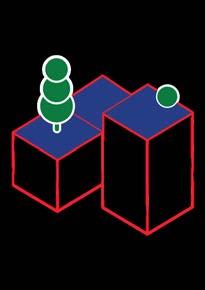
Temporary urbanism is instrumental in magnifying the local facets of the circular economy and piloting virtuous circular initiatives for potential scalability While temporary projects may not establish complete circular production chains due to resource and scope limitations, they can help create enabling conditions, including identifying and mobilising key stakeholders and testing collaborations and services.
Engaging local businesses, makerspaces, and artisans in creating pop-up installations from recycled materials can stimulate both the procurement market and the recycling chain on a small scale Moreover, temporary use facilitates the testing of lightweight and rapid production or recycling cycles, alongside pinpointing strategic areas for waste collection or goods distribution and sales. From a cultural point of view, temporary use practices can serve as platforms for raising citizen awareness and promoting behavioural change by making circular products enticing, and encouraging repair and reuse. Projects co-designed with citizens cannot only hold greater relevance and effectiveness, but also foster trust and social capital within the community, cultivating a sense of responsibility towards future generations. Furthermore, involving local residents can foster the development of innovative, context-specific strategies for waste reduction, resource sharing, sustainable consumption, and biodiversity regeneration, laying the groundwork for more ambitious, large-scale initiatives
Drawing from our experience in T-Factor, below is a non-exhaustive list of possible areas of intervention for temporary use under this thematic mission:
Art Installations from recycled materials: developing or commissioning temporary art installations and exhibitions created with recycled and upcycled materials, showcasing creative reuse and highlighting the potential of discarded materials
Give, Take & Fix days: organising regular events and hands-on sessions where residents can share and swap unused objects, participate in upcycling workshops, and repair demonstrations
Circular hotspots and facilities: testing and prototyping physical facilities in urban neighbourhoods where discarded or underused materials can be shared and recirculated among residents, creative and maker communities, and small businesses.
Temporary Urban Gardens: leveraging vacant or unused green pockets to create temporary urban gardens where residents can grow food, compost organic waste, and participate in community gardening activities, promoting resource recovery and regeneration.
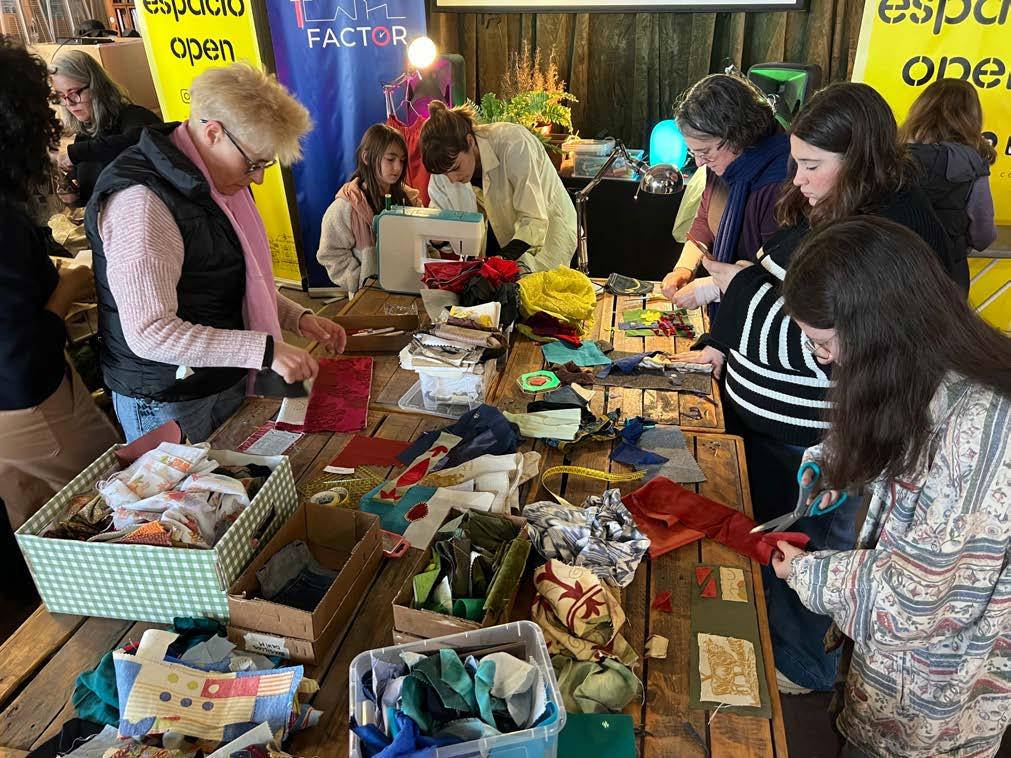 T-Factor activities in Zorrotzaurre.
T-Factor activities in Zorrotzaurre.

Temporary Circular Markets: developing temporary circular markets as demonstrators of local economies of circularity and regenerative design, designing eco-friendly market stalls and basic infrastructure, featuring sustainable products and locally made goods, and providing opportunities for local artisans and businesses
Temporary Maker Spaces: creating temporary workshops or maker spaces equipped with tools and resources for digital fabrication and rapid prototyping, where individuals can learn to design and produce products using recycled or sustainable materials
Circular Competitions and Prizes: developing competitions and prizes that support and award innovative designs and solutions, and encourage collaborations involving university staff and students, makers and creatives, and traditional businesses.
Technical expertise. Temporary interventions dealing with circularity and regenerative practices may require specific expertise, especially in aspects and fields such as sustainable materials, digital manufacturing, and rapid prototyping techniques. Securing these different expertise from early stages can not only enhance the feasibility and concrete materialisation of

theoretical concepts and designs, but also expand opportunities for intervention and impact.
Focus on vulnerable groups. Leveraging circular temporary initiatives to support vulnerable groups can amplify the potential for impact and provide immediate benefits Integrating upskilling and reskilling workshops, opening temporary positions for ‘circularity facilitators’, and providing learning recognition for social action can help ensure that marginalised communities have access to the benefits of the circular economy through temporary interventions.
Social and cultural considerations. Spatial and service designs that integrate social and cultural objectives in sync with circular and regenerative principles can enhance attractiveness and adoption For example, deliberately designing a circular facility also as a device for conversations and social encounters can help endorse and prototype different functions within the same physical experiment.
Economic factors. Considering economic factors early on is crucial for ensuring the long-term viability of circular facilities. This involves establishing legal forms that align with circular principles, developing and testing viable business models, fostering strong partnerships with suppliers, engaging extensively within the community, and creating opportunities for upskilling and employment

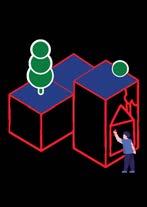

When designing a temporary use on Circularity & regenerative practices, consider the following elements as possible points of departure or reflection:
Circular businesses; experts in waste management; repair educators; businesses producing (on purpose or as byproduct) recyclable materials; fab labs; urban gardeners

Communal spaces; street markets; warehouses and garages; containers; community hubs; fab labs and makerspaces; green areas

Community building; sustainability education; facilitate sustainable and healthy consumption choices; generate ideas for planning; support to local businesses; access to innovation for creatives and makers

Increase the attractiveness of the area; establish novel sharing economy services; improve sustainability and environmental footprint of the area; detect strategic hotspots for waste collection; create new circular retail areas

Poor environmental impact due to lack of impact tracking system; promote businesses that are circular only on the surface; use of unsustainable and/or pollutant materials for temporary infrastructure; engagement limited to people with DIY/making skills.
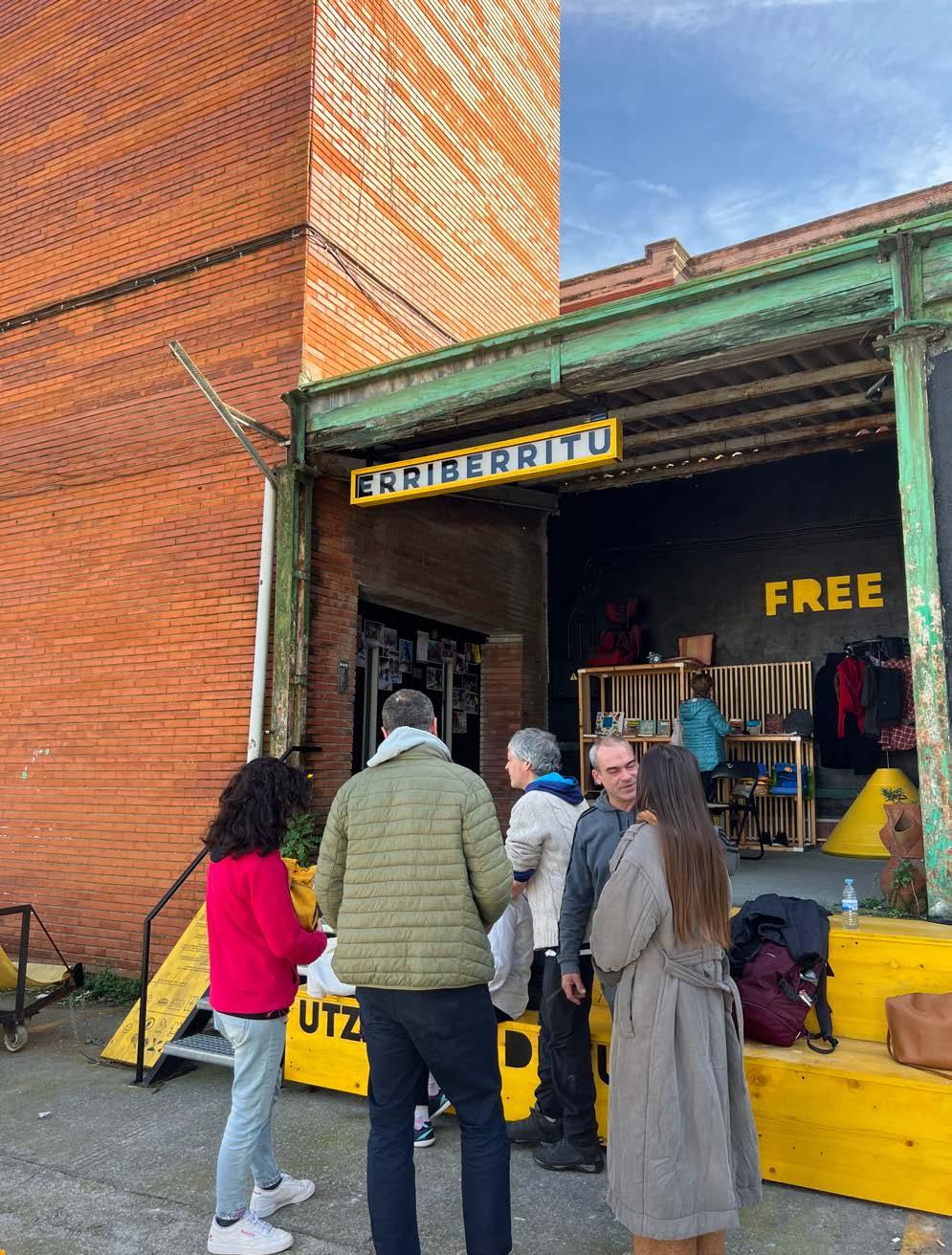

Leave what you want, take what you need
Where: Bilbao, Zorrotzaurre (SP)
When: 2022 - ongoing
Partners & Collaborators: Mondragon University, Tecnalia, Studio Petit Muller, Open University of Catalonia, Errizikleta
Target groups: Residents; small manufacturers, makers and creatives, university students and staff
Type of space: industrial warehouse

THE EXPERIENCE Erriberitu is a space for the exchange of objects such as clothes, books and small electrical appliances designed and built by the students of the Global Digital Humanities course of Mondragon University during the 2022-2023 academic year. The students worked on the development of a temporary urban planning proposal focused on promoting the circular economy and sustainability at the neighbourhood level The students worked in 4 teams: Food, Exchange, Manufacturing and Education, each focused on developing an aspect linked to the circular economy. The group dedicated to the exchange built structures to store objects such as clothes, books, toys, and materials. The food team constructed a large mobile barbecue, intended for use by the neighbourhood for parties, gatherings, and other activities, which has been donated to the neighbourhood
association The students from the manufacturing team created a map of the companies currently operating on the island, with the aim of fostering connections among them and promoting resource exchange Meanwhile, the education team prepared informative panels with content aimed at spreading the principles of the circular economy. The result is a collection point open to anyone who wants to leave or take things, under the slogan "leave what you want, take what you need".
SIGNIFICANCE The project allowed the mobilisation of neighbourhood associations and local companies towards a collective goal The possibility to collect items for free made the initiative financially inclusive and promoted reuse over mindless consumption. Such experiential learning paths can empower young people to be active agents of change at a local, tangible scale, providing them with the confidence and knowledge to implement projects beyond universities’ labs
1 Circular Hotspot created
35 University students involved (50% female)
+80
12 Experts among makers, designers & creatives Local residents involved in activation events
Weaving youth in regenerative practices
Where: MIND, Milan (IT)
When: 2022-2023
Partners & Collaborators: LAND, Polifactory - Politecnico di Milano, PlusValue, Fondazione Triulza, Progetto Natura Onlus, Wood*ing Wild Food Lab, Istituto di Istruzione Superiore ‘Vilfredo F Pareto’, Harpo Verde Pensile, WoodBlocX
Target groups: children and adolescents; teachers; families
Type of space: green space


T-Factor activities at Herbula, MIND. Photo credits: Polifactory
THE EXPERIENCE Herbula is a temporary wild garden realised in MIND to foster awareness of the multiple benefits of green and wild spaces in cities, and cultivate interest and engagement in green and regenerative practices among different publics and generations It consists of an herbal garden dedicated to the cultivation of indigenous herbs and flowers, fostering local biodiversity and the smart use of its products. A digital archive of local biodiversity complements the physical experimentation. Over time, Herbula has hosted multiple activities spanning
exhibitions, collective gardening events, hands-on workshops, and biodiversity mapping Among its most successful initiatives, Herbula hosted the ‘Biodiversity4Schools’ programme, which involved schools from surrounding areas in a collaborative and practical exploration of urban biodiversity and ways for its protection and regeneration. As part of this journey, students also created ‘do-ityourself’ bug hotels, assembling components and installing them on site Other activities organised included seeding and gardening with MIND’s tenants, as well as the Biodiversity Ambassador Programme which involved them in biodiversity mapping activities.
SIGNIFICANCE Herbula is a valuable example of a green and wild space that can be activated during interim phases of redevelopments to foster connections with nature and contribute to its preservation and regeneration, accommodating diverse formats targeted at different audiences By creating a dedicated space, planners can foreground the importance of the topic for the area’s identity Moreover, by spreading the responsibility of care across residents and dwellers, such gardens can improve a sense of community and belonging. Finally, the use of mapping technologies and digital archives can provide valuable information for planning specific interventions aimed at restoring and regenerating local flora and fauna 170 among children and adolescents involved
School teachers
Joyful and engaging learning experience relevant to climate education Bug hotels realised, wild and local species cultivated
Renewing traditional markets through the circular economy
Where: Euston, London (UK)
When: 2022-2024
Partners & Collaborators: Our Little Market CIC; Public Collaboration Lab at CSMUniversity of the Arts London; Somers Town Communities; MA Industrial Design Central Saint Martins; MAID Design for Publics; Somers Town Sewing Group; BA Fashion Central Saint Martins
Target groups: local residents, market stakeholders, small producers
Type of space: street market

THE EXPERIENCE Chalton Street Market is a publicly run Street market, one of London’s oldest, established in 1795. In recent decades Chalton Street Market has seen a decline in economic activity and footfall. Residents are keen to see the market restored to a busy community hub delivering social and economic value to the neighbourhood Led by Camden council, Community groups, cultural organisations and social enterprises neighbouring Chalton Street have been awarded funds, as part of the Mayor of London/GLA funded Future Neighbourhoods 2030 programme, to develop and test initiatives that contribute to a more circular and collaborative Somers Town, addressing the rising cost of living and climate emergency T-Factor has organised and co-funded some of the
activities, including community market stalls bookable by residents free of charge, a refill stall for packaging free products, a cargo bike stall selling local dried herbs and teas and activation events. The Market Hub Facilitator and Enterprise Office, co-created through the pilot, enables Our Little Market CIC to establish the ‘Made in Somers Town’ sales platform, facilitating local makers to sell their products at Chalton Street and online The Collaborative Purchase Box Scheme is being implemented and tested through the pilot, providing affordable fruit and vegetables for residents, contributing to addressing food poverty now and in the future.
SIGNIFICANCE Big retail has reduced the influx of people into neighbourhood markets, which are important community hubs for gatherings and serendipitous encounters By modernising these markets with stalls open to citizen initiatives and promoting the circular economy, we can rejuvenate these local assets, attract new customers, and appeal to younger generations in the neighbourhood who care about sustainability or are experiencing financial difficulties. These temporary hubs for interfacing with citizens can help gauge local demand and connect it with funding
6
Eco-friendly market stalls realised
250 Residents involved in swapping, upcycling and repairing workshops +
Position of Market Hub Facilitator created
Promoted and cultivated circular economy practices at neighbourhood level

In light of the complex and interconnected nature of contemporary urban challenges, it is increasingly evident that knowledge and innovation production cannot be confined solely to universities or large enterprises' research labs. Instead, it requires contributions and collaboration across public, private, and civic sectors, transcending disciplinary boundaries and fostering a culture of diverse ideas intersecting and evolving.
Cities are unique incubators for fostering collaborative knowledge ecosystems One of their key strengths lies in their ability to attract talent and creativity from various fields and backgrounds At the same time, cities are where the effects of global challenges often materialise and become more tangible and visible, standing as ideal contexts for exploring new ways to endorse and unravel innovation and social innovation through novel alliances The adoption of concepts such as public engagement, mission-oriented innovation, open science, and citizen science represents a significant contemporary effort for cities aspiring to foster access to knowledge, evidence-based policies and out-of-the-box research and development
At the heart of this commitment lies the establishment of innovative intermediary structures that bridge the gap between public, private, and citizen sectors. These structures facilitate the dissemination of knowledge, encourage citizen involvement, promote collaborative creation, and contribute to the development of regenerative and sustainable urban environments within open innovation ecosystems. This shift towards collaborative knowledge and innovation production holds potential for catalysing deep change at both individual and societal levels. By fostering a culture of collaboration and inclusivity, cities can pave the way for a more resilient and sustainable future, where innovation is democratised and leveraged for the collective benefit of society.
Cross-sector
Co-creation and multi-stakeholder collaboration are central tenets of EU policies and initiatives, reflecting a commitment to participatory governance, sustainable development, and inclusive growth across Europe. For instance, the new wave of research and innovation embodied by Horizon Europe is rooted in the notion of mission-oriented innovation EU Missions essentially embrace a new way of defining and addressing innovation objectives, making them more concrete, timebound, achievable, and capable of mobilising and synergising different actors and assets in a joint and collaborative effort of discovery and learning Moreover, open science and citizen science are overarching methodologies integral to EU research and innovation endeavours across various domains. Initiatives like the New European Bauhaus and the 100 Intelligent Cities Challenge call for bold projects rooted in innovative alliances, including by providing support to novel partnerships involving artists, creatives, architects, landscape planners, urban developers, tech entrepreneurs and citizens. Furthermore, the EU has a long-standing commitment to fostering pioneering social innovation projects Major initiatives like the Social Innovation Initiative, now operating under the renewed ESF Social Innovation+ Initiative, exemplify this dedication. Through these efforts, the EU seeks to harness the power of social innovation to address pressing societal issues, drive positive change, and foster inclusive and resilient communities
Cross-sectoral alliances in urban regeneration efforts are pivotal in fostering collaborative knowledge hubs able to address complex challenges and advance sustainable and inclusive urban development. These knowledge alliances, which bring together stakeholders across the so-called ‘quadruple helix’ - government, academia, industry, and civil society - offer a multitude of opportunities for driving positive change through urban regeneration efforts Often, knowledge and innovation are at the heart of the regeneration project: science parks, innovation campuses and districts are typical destinations
Whether innovation is structured into the framework of the area's new function or pursued as an intangible objective, one key opportunity lies within the collaborative power of cross-sector alliances. By integrating perspectives from different sectors, these alliances can develop holistic solutions to urban challenges, drawing on a wealth of knowledge and skills. This collaborative approach fosters innovation and creativity, sparking the exchange of ideas and the emergence of forward-thinking

strategies for urban regeneration. Furthermore, cross-sectoral alliances enable resource-sharing among stakeholders, overcoming individual constraints and limitations in resources. Whether it is funding, infrastructure, or expertise, pooling resources from multiple sectors can enhance the efficiency and effectiveness of urban regeneration efforts that have education and innovation as core elements Engaging diverse stakeholders in cross-sector alliances also promotes stakeholder buy-in and community support. By opening knowledge to residents via instruments such as citizen science and professional upskilling programmes, these alliances ensure that urban regeneration efforts are inclusive and responsive to the needs and aspirations of local residents and communities.
However, despite the numerous opportunities they offer, cross-sector knowledge alliances also face challenges that require careful navigation and proactive management Coordination and communication can be complex due to differing goals, timelines, and communication styles among stakeholders Addressing power dynamics and promoting equitable participation is crucial for fostering trust and cooperation within these alliances, especially by prioritising the involvement of stakeholders who face multiple barriers to accessing and benefitting from cocreation Additionally, resource constraints and institutional barriers may hinder cross-sectoral collaboration, requiring innovative financing mechanisms and advocacy for policy changes Overcoming these challenges requires effective leadership, clear communication, and a commitment to collaborative problemsolving.

Collaborating across sectors is often seen as a natural approach to urban regeneration. However, creating effective contexts for such collaboration to unfold is typically challenging Values, organisational mindsets, governance structures, communication protocols, coordination mechanisms, and management practices can vary significantly across contexts, making it hard to establish a universal blueprint for successful collaboration Temporary urbanism offers a unique opportunity to address these challenges by providing a safe and flexible environment to test novel collaborations through small-scale projects Unlike traditional long-term planning processes, temporary interventions have a reduced temporality, allowing for out-of-the-box experiments that may be difficult to justify in larger, profit-oriented initiatives. Temporary experiments can help gauge interest and appetite for wide collaborations, facilitating early conversations and mapping out opportunities These practices can further contribute to advancing new ways of working together that support
Ultimately, temporary uses can pave the way for longer-term partnerships by exploring together and demonstrating the potential benefits of collaboration. They encourage stakeholders to venture into new, enduring avenues for cooperation, leading to more inclusive, resilient, and sustainable urban regeneration efforts In sites such as innovation districts, temporary experiments are a resource for crafting collectively a shared identity for the stakeholders hosted there, or for those who will inhabit the space later on, so that the area becomes not only the siege of these organisations, but also a lever for new opportunities and a place they belong to.
Drawing from our experience in T-Factor, below is a non-exhaustive list of possible areas of intervention for temporary use under this thematic mission
Networking events: developing events of stakeholders’ gathering and convening such as aperitifs, stakeholders’ coffees, and other informal events that bring diverse stakeholders in informal settings, supporting conversations and the emergence of collaboration opportunities by ‘serendipity’.
Meet your neighbourhood's walks and tours: organising guided visits within and beyond the area under regeneration, bringing together diverse stakeholders in the joint exploration and discovery of their own activities and physical locations.
 T-Factor workshop in Zorrotzaurre.
T-Factor workshop in Zorrotzaurre.
Public events and festivals: organising and facilitating public events such as festivals and open weekends where diverse stakeholders organise and propose different activities distributed in space and time, opening their doors to the public and inviting them to know more about what they do and how they could contribute to urban regeneration efforts
Co-design workshops: facilitating workshops that bring together stakeholders from different sectors to design and plan temporary initiatives collaboratively.
Co-creation programmes and living labs: engaging stakeholders in innovative pathways of co-creation and co-production of temporary uses in response to pressing urban challenges, fostering new ways of teaching and learning.
Participatory Art projects: temporary art projects that engage communities in the co-creation of public artworks, installations, and murals, fostering collaboration and dialogue among artists, university staff and students, public authorities and local communities
Co-working spaces: exploring and testing temporary co-working spaces that provide a collaborative environment for entrepreneurs, startups, and professionals from various sectors to work together on urban regeneration initiatives
Cross-sectoral advisory boards and working groups: establishing multidisciplinary and cross-sectoral groups of advisors to support decisionmaking on matters of public interest through temporary interventions.
Suspicion. Effectively addressing and overcoming suspicion and mistrust can prove challenging, especially among stakeholders typically excluded from, or with weaker access to, co-creation processes. Communicating clearly with simple and accessible language, endorsing facilitation and mediation as continuous practices (for example by enrolling experts in these fields), and mapping interests and motivations from early stages can help mitigate risks of misunderstandings and conflicts, and enhance chances for collaboration that is meaningfully valued by the different stakeholders at play

Trust building. Building trust among stakeholders takes time and requires consistent effort. Investing in relationship-building and demonstrating reliability and transparency help establish trust and cultivate lasting partnerships.
Packaging. Given their often modest scale, temporary uses may face challenges in
garnering interest and support, particularly financial backing, from key stakeholders and decision-makers. However, establishing a cohesive narrative and coordination framework that unites numerous small-scale temporary initiatives and actors can be transformative Utilising 'packaging' approaches that highlight and advocate for diverse stakeholders within temporary interventions can enhance their credibility in the eyes of developers, investors, and policymakers. This, in turn, can streamline permissioning processes, attract additional resources, and pave the way for future, more complex collaborative interventions. Rewarding. Collaboration is often a demanding task, requiring dedicated time and effort Especially in projects constrained to short times, designing tailored incentives and rewards can spark stakeholders’ interest and engagement. These can include financial support, access to space, visibility, learning recognition, and capacity building, making sure that incentives are designed to be transformative of relationships and values, rather than purely transactional. Collaboration models. In temporary uses endorsing wide co-creation, it is paramount to tap into the models that can effectively support collaborations beyond the short term. Exploring structures such as community-led committees, stakeholder working groups, or multi-sectoral task forces can help sustain collaboration and ensure continued engagement towards long-term goals


When designing a temporary use on Cross-sector alliances for new knowledge & skills, we suggest to keep attention to the following aspects:

Universities and research institutes; enterprises in different sectors; schools and vocational training institutes; community groups and associations; local authorities.

Community hubs; communal spaces; local enterprises and universities premises

Community building, networking and partnerships between public/private entities; novel data generated via citizen science; reskilling & upskilling; scientific dissemination; promotion of STEAM (Science, Technology, Engineering, Arts, and Mathematics) agendas; generate ideas for long-term planning.

Increase the attractiveness of the area; new knowledge production; new R&D businesses; boost novel R&D collaborations/institutions; motivate young people for a career in research; evidence-based urban policies

Little comprehension of the real challenges experienced on the ground; jargon and objectives too academic and exclusive for citizens; little inclusion of citizens in the design of the process; oversee concertation phases, leading to incompatibility of stakeholders’ agendas


Where: MIND, Milan (IT)

o capable of welcoming both internal and external stakeholders and hosting events,
services, and initiatives The Community House served as the venue for the initiative Futurabili, jointly created by one MIND company, ROLD, and a third sector organisation from the surroundings, CoopeRho, with the support of Fondazione Triulza, and later joined by another MIND company, The DesignTech. Futurabili consisted of a career guidance path to the jobs of the future addressed to young people between 18 and 34 years old, including NEETs and job seekers. More than 50 candidatures were received The initiative organised four orientation moments delivered by experts and attended by 20 participants, each of whom had the opportunity to request a one-to-one follow-up A second edition, Futurabili4Baranzate, followed up in 2023/2024, targeting youth in Baranzate, Italy's most multicultural district, with a focus on second-generation immigrants. The program aimed to connect young individuals with opportunities in MIND. Within this edition, participants created a semi-professional video reportage of MIND, providing a personal perspective on the area
SIGNIFICANCE The landscape of work is undergoing rapid transformation, propelled by advancing technology and the pressing social and environmental challenges confronting governments and businesses. In response to this dynamic environment, a multitude of new professions have emerged, demanding the cultivation of diverse skill sets Both young people and adults find themselves reevaluating their educational paths and career trajectories, yet often lack opportunities to engage directly with industry experts and explore the array of possibilities available to them. Initiatives such as the Community House address this gap by providing accessible information and resources within local neighbourhoods By offering a platform for dialogue and interaction, these initiatives bolster the employability of community members and foster greater equality of opportunity These temporary experiences serve as bridges connecting aspiring professionals with potential employers, thereby opening doors to new professional horizons.
20 young people (including NEETs) involved in job orientation
Motivated stakeholders to new collaborations with social purposes
Where: Bilbao, Zorrotzaurre (SP)
When: 2022 -2023
Partners & Contributors: Bilbao Ekintza, Espacio Open, Tecnalia, Mondragon University, University of Deusto, IED Kunsthal, Abad Design, Godot Studio, Petit Muller, Bobo Espazioa, Errizikleta, ANCI Toscana, LAND, Open University of Catalonia, University of the Arts London CSM
Target groups: University students and professors; makers and creatives active in the area; neighbours, local authorities’ representatives
Type of space: Mix of indoor and outdoor spaces, including streets & squares, warehouses and former industrial spaces
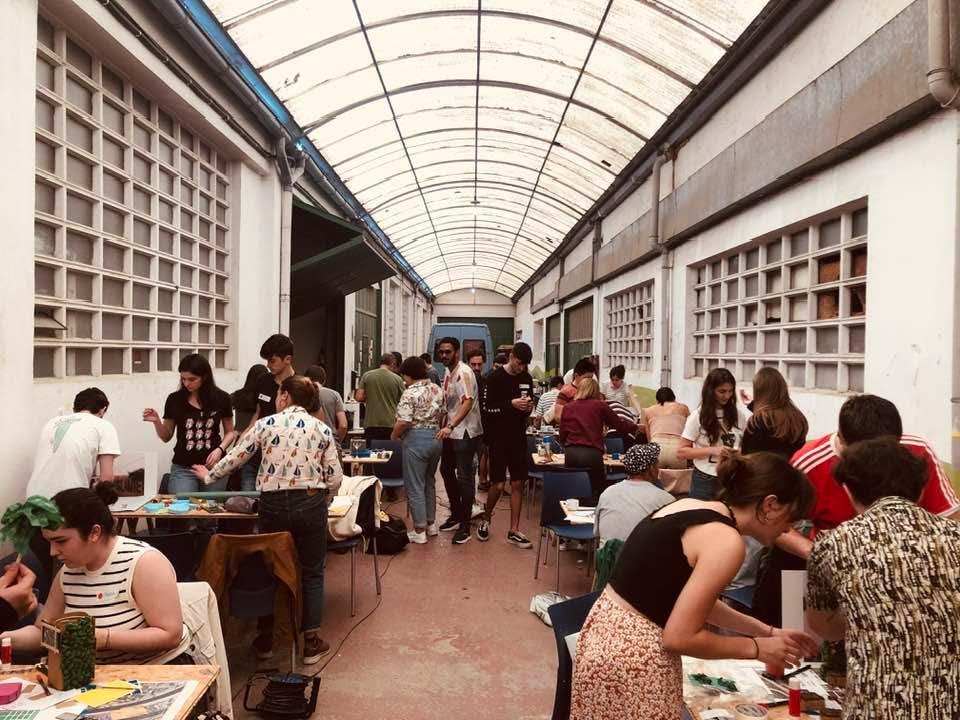
THE EXPERIENCE The ‘Civic Curriculum’ pioneered innovative collaboration between local universities and grassroots organisations in Zorrotzaurre, aiming to cultivate a dynamic and open ecosystem of innovation in the area Zorrotzaurre has seen a surge in creative endeavours in recent years, with abandoned industrial buildings transformed into hubs for performing arts, sports, digital manufacturing, crafts, and more Despite their key contribution to the local economy and community cohesion, many of these organisations face the threat of displacement.
The arrival of prestigious universities in the area signifies a shift towards knowledge-based economies, presenting both opportunities and challenges for grassroots initiatives To address this dynamic, the Civic Curriculum served as a bridge between universities and grassroots organisations, focusing on three thematic pathways: climate adaptation and resilience, circular and collaborative economy, and urban design for social well-being. Each pathway was developed in collaboration with a local university - University of Deusto, Mondragon University, and IED Kunsthal - and integrated into existing university curricula to ensure recognition of learning outcomes The Curriculum brought together students, faculty, and practitioners from diverse grassroots backgrounds to tackle pressing urban challenges through hands-on projects. Through this collaborative endeavour, the Civic Curriculum sought to empower local communities and students to address urban issues while nurturing a culture of innovation and collaboration in Zorrotzaurre
SIGNIFICANCE The Civic Curriculum demonstrates viable and meaningful ways to foster collaboration between local universities and grassroots organisations, aiming to address urban challenges and cultivate innovation. By integrating thematic pathways like climate adaptation and circular economy into existing university curricula, the Civic Curriculum bridges academia and the community Through hands-on projects, it empowers students and practitioners to tackle pressing urban issues while nurturing a culture of innovation and collaboration This approach is essential for promoting sustainable development and inclusive growth in urban areas, especially by creating new capacities and opportunities for action that make the most of cross-sectoral collaboration
Students involved
Confidence and momentum for universitiesgrassroots collaboration
Weaving Universities, Cultural organisations and Communities in urban renewal
Where: Lisbon, Trafaria (PT)
When: September - October 2023
Partners & Collaborators: Nova University, CADA, Éter – Cultural Production, EDA Associação, Santa Casa da Misericórdia de Almada, Municipality of Almada
Target groups: university students, artists, cultural associations, citizens at large
Type of space: public open spaces and heritage buildings

THE EXPERIENCE The ANIMAIS artistic residency took place in Trafaria (Lisbon) in fall 2023, involving a group of 6 artists selected through an open call. The residency built upon the Critical Futures programme organised in Trafaria in preceding phases, which initiated students, artists, university professors and local residents’ engagement in a discussion and exploration of the local identity through the lens of arts, critical theories, and political ecologies The residency took place in two phases: first, developing artistic and ethnographic research in the area, and second, creating prototypes and artefacts blending arts and technology to celebrate local heritage and identity. Throughout the residency, artists collaborated together with students and local cultural organisations, while grassroots communities and small economic activities in the area were mobilised to provide materials and basic resources needed for the residency The final public event brought +300 citizens on
site despite adverse weather conditions, demonstrating the unwavering community support and enthusiasm for the culmination of the residency's efforts This gathering served as a testament to the resonance of the art created and the impact of the collaborative process on the local community. The success of the residency motivated the promoters to organise a new edition for the academic year 2024-2025, seeking to enlarge artists’ involvement and expand local collaborations.
SIGNIFICANCE The ANIMAIS artistic residency exemplifies the valuable role of arts and culture in urban regeneration. Through collaborative efforts involving artists, students, professors, and local residents, the residency celebrates and foregrounds the area's unique identity, contributing to revitalising public spaces, fostering community cohesion, and benefitting local economies Through creativity and community engagement, these endeavours empower residents to shape their own futures and ensure inclusive, responsive regeneration efforts rooted in local identity and pride
49 Applications received 6 Artworks created
Attracted visitors on site and nurtured local economy Citizens attending the exhibition +300

The connectedness between individuals and their surroundings forms a bedrock of trust and community cohesion. In today's interconnected world, where identities, desires, and cultures transcend geographical boundaries and find expression in digital realms, there exists a noticeable disconnection between people and the physical spaces they inhabit. This disconnection is exacerbated by escalating xenophobia, populism, and climate concerns. In response, embracing a sense of rootedness or adopting the notion of "becoming people of place," as biologist Spencer Scott suggests, becomes increasingly vital for promoting a sense of belonging, and ultimately fostering community resilience and solidarity.
Cities grapple with two distinct forms of heritage: one steeped in distant history, often celebrated by tourists but not deeply ingrained in the everyday lives of citizens, especially younger generations; and the other, more recent, fraught with conflict and often associated with periods of economic downturn, warfare, and loss Sites like former factories or military installations can evoke painful memories that residents may prefer to forget
Revitalising the bond between heritage and local identity, and utilising heritage as a cultural bridge between communities and generations, has the potential to strengthen the social fabric of cities. Actively engaging in cultural activities is recognised as a fundamental human right by the UN Committee on Economic, Social, and Cultural Rights (2009). Ultimately, it fosters a collective narrative that individuals can relate to and envision themselves contributing to in the future, thereby strengthening community bonds and promoting resilience in the face of challenges.
Cultural heritage encompasses material, intangible, and natural assets with unique shared value, which in turn underscores an equally unique need for protection and preservation through time. Inherently, cultural heritage is an evolving concept that mirrors changing societal dynamics, vested interests, and conflicts that usually surround culture and the processes of ascribing cultural value As our understanding of cultural heritage evolves, cities are challenged to reassess preservation strategies, and cultivate a deeper appreciation for the cultural value inherent in the structures, spaces, and meanings that shape contemporary urban identities The EU has long endorsed a transformative vision of cultural heritage, with several policy milestones in the recent past that have significantly evolved and expanded its meaning, and with initiatives like the European Capitals of Culture that, since 1985, has been celebrating and awarding the unique cultural heritage across European cities. Currently, the New European Agenda for Culture outlines a strategic framework for cooperation on culture at the EU level, emphasising the positive contribution that culture brings to Europe’s society and economy In the aftermath of the COVID-19 pandemic, the EU has further intensified efforts to elevate the role of culture in sustainable development. Within the Recovery and Resilience Facility, the Commission is facilitating Member States' efforts to include support for cultural sectors in their national recovery and resilience plans, with a focus on linking cultural investments to the overarching themes of green transition and digital transformation. Moreover, the New European Bauhaus initiative provides a platform for collaboration among stakeholders and disciplines to explore culture as a driver of sustainability, beauty, and inclusiveness in cities. Finally, Creative Europe is the flagship programme of the EU in the field of culture, which invests in actions that reinforce cultural diversity and respond to the needs and challenges of the cultural and creative sectors
Urban regeneration initiatives offer a unique opportunity to preserve and champion local identity and heritage, contributing to the cultur authenticity of places. By revitalising culture and heritage assets such as historic buildings, heritage objects, cultural landscapes, and community traditions, regeneration projects can celebrate the unique character and history of a place in holistic and inclusive ways. This not only fosters community pride but also strengthens social cohesion and a sense of belonging among residents

Moreover, emerging technologies such as 3D scanning and printing, digital archiving techniques, Geographic Information Systems (GIS), virtual and augmented reality, and distributed ledgers open up new avenues for preserving and championing local heritage through the creation of novel artefacts, immersive experiences, and innovative models for engagement and interpretation
However, striking a balance between heritage preservation and innovation often poses a significant challenge in urban regeneration initiatives. The pressure to accommodate new developments can sometimes come at the expense of existing heritage assets, leading to tensions and conflicts between developers and residents. Furthermore, achieving consensus on preservation priorities, design aesthetics, and future development plans can be complex and time-consuming due to diverse interests within the community. Securing funding for heritage conservation and regeneration, especially when assets are in a bad state of conservation, can be difficult due to the lack of viable business models Moreover, while emerging technologies hold great promise for revolutionising the preservation and dissemination of cultural heritage, their widespread adoption is challenged by a variety of factors, not least the concerns about the ethical implications in areas such as data privacy, intellectual property rights, historical bias and cultural sensitivity Lastly, the spectre of gentrification often threatens and undermines objectives and impacts of equality and inclusivity, particularly when culture and heritage risk becoming 'trojan horses' for crafting new urban identities that ultimately lead to displacing existing residents.
Any urban regeneration project entails some sort of negotiation the area Introducing something coherent, innovative, and accessible to people is a critical task, one that can be facilitated through temporary interventions Temporary use provides a unique opportunity to engage with the local identity, uncover stories of places, and explore layers of value and meaning that are typically overlooked or concealed in urban regeneration efforts Furthermore, temporary urbanism serves as a platform for acknowledging an often painful aspects of a community's history, fostering awareness and inclusivity. By creating temporary spaces for reflection and commemoration, urban regeneration initiatives can empower marginalised social groups and pave the way for their meaningful inclusion in future plans. In the context of heritage, temporary urbanism can focus on implementing light infrastructure such as heritage trails, and delve deeper into the community fabric by identifying local custodians of history and amplifying their voices
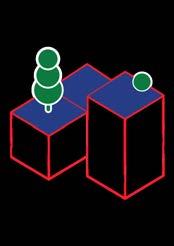
Drawing from our experience in T-Factor, below is a non-exhaustive list of possible areas of intervention for temporary use under this thematic mission:
Festivals, workshops, and events: organising moments of celebration and encounter around material and immaterial heritage that promote collective (re)appreciation of local identity and contribute to foster a sense of belonging.
Local heritage trails: creating pathways and walkscapes equipped with dedicated wayfinding systems and informative resources such as brochures and apps These trails serve as narrative conduits, linking heritage with specific physical locations, thereby enriching the understanding of local history and culture.
Heritage-themed workshops: hosting temporary workshops and hands-on activities focused on traditional crafts, skills, and practices, providing opportunities for locals and visitors to learn and engage with the area's cultural heritage and community traditions
Art installations and performances: commissioning art installations and supporting artistic performances that celebrate and interpret elements of the local heritage, adding vibrancy to public spaces, sparking conversations about the area's identity, and engaging audiences in immersive cultural experiences.
Artistic residencies: facilitating the immersion of artists within the sociocultural fabric of areas under transformation, fostering prolonged contacts and exchange with local communities, and supporting the creation of thought-provoking artworks celebrating or questioning local history and identity
 Clay workshop in Trafaria.
Clay workshop in Trafaria.

Bottom-up and Digital Museums: harvesting local heritage through the collective sharing of stories, artefacts, and photos, and using innovative technologies such as 3D reconstruction and photogrammetry to reconstruct lost heritage and enhance access to cultural resources
Documentaries and audiovisuals: leveraging podcasts and documentary practices to tell the stories of places through local voices, actively involving the community in choosing themes, places, frames, schedules, actions, viewpoints, and more
Cultural bias. Temporary interventions rooted in culture and heritage can inadvertently bring about risks of exclusion, unintentionally prioritising certain cultural narratives or traditions over others It is thus important to continually reassess engagement and public storytelling strategies, making sure that different voices are included and represented, and that stories, values, and matters of concern can genuinely emerge from the bottom
Valuing community capacity. Cultural and heritage initiatives sometimes perpetuate an assistential mindset, diverting resources for preservation and
Podcast recording session in Trafaria.curation away from local communities. However, local communities often possess the skills and insights necessary to preserve their heritage and should be provided with the resources to do so. Effective collaboration in cultural temporary use projects must prioritise mutual respect, recognise each party's unique strengths, and foster genuine and rewarding engagement
Immaterial heritage. In areas that may struggle to attract investment for regenerating tangible heritage, focusing temporary interventions on immaterial heritage can be a strategic approach to revitalising communities and preserving cultural traditions, including by overcoming the often strict restrictions and requirements for interventions on material heritage Practices such as collecting stories, creating story trails, or developing documentaries can become enduring testaments of cultural significance, fortifying community bonds and a sense of belonging.
Pros and cons of innovative technologies. While it is important to consider the risks of exclusion from the use of innovative technologies and social media (for example, elderly people not being used to podcasts or not even having mobile phones), such risks can also become opportunities for strategic learning and creative solutions. Organising live listening sessions in places such as municipal libraries or cafès can cultivate collective emotion and joy, kickstarting a process that local communities can easily make their own



When designing a temporary use on Local identity & heritage, consider the following elements as possible points of departure or reflection:
Cultural organisations; community organisations; heritage experts; cultural industry players; individuals or groups related to local traditions (i.e. dance, food, embroidery); artists and creatives.

Type of spaces
Community hubs; heritage sites and objects; communal spaces.

Community building; raise awareness on local history and heritage; ideas for long-term planning; novel cultural production; access to cultural production for young artists and creatives.

Increase the attractiveness of the area; (re)open historical sites; enhance the area’s identity connection to heritage;

Cultural appropriation of minorities’ history; little diversity in participation; failure in actualising heritage resulting in disengagement from citizens; too much focus on tangible heritage, leaving convivial practices underdeveloped.

 Fishing net workshop in Trafaria.
Photo Credits: NOVA University
Fishing net workshop in Trafaria.
Photo Credits: NOVA University
Where: Trafaria, Lisbon (PT)
When: June-October 2022
Partners & Collaborators: NOVA University Lisbon (professors, students and invited artists)
Target groups: residents and citizens at large
Type of space: outdoor routes with cultural/heritage significance

THE EXPERIENCE A ‘walkscape’ typically refers to the experiential and perceptual qualities of walking through urban environments This practice encompasses not only the physical attributes of streets, sidewalks, and public spaces but also the sensory experiences, social interactions, and emotional connections that arise during the act of walking Nomadic Territories was organised in Trafaria (Lisbon) as a cycle of four walkscapes, which involved residents and newcomers in a collective exploration of the area's iconic and symbolic sites Through predetermined routes and diverse perspectives, participants experienced Trafaria not only as a geographic and physical space but also as a repository of stories, memories, and socio-political significance. This immersive approach invited participants to engage with its rich cultural heritage and envision its future potential The walkscape allowed the pilot to explore and sense the value and meaning of the existing heritage in Trafaria, especially immaterial heritage, harvesting meaningful insights for the later design
Nomadic Territories Walscape in Trafaria.of culture-led intervention during interim phases of urban regeneration in the area
SIGNIFICANCE The Walkscapes are an effective and light format for exploring the history of an area and unveiling layers of meaning that often remain hidden or undervalued. Within meanwhile practices and urban regeneration processes, walkscapes can serve multiple and complementary objectives, such as engaging citizens in creative and collaborative rediscoveries of identity and heritage; identifying areas in need of infrastructural upgrades and improvements; cultivating a sense of belonging; and fostering ‘slow’ and more sustainable ways of moving and enjoying urban environments.
Participants from different age groups and cultural backgrounds
Routes explored through landmarks, emotions, and memories
Rich set of insights for storytelling and culture-led programming
Digital and material reconstruction of local heritage
Where: Euston, London (UK)
When: October 2021 - ongoing
Promoters & Collaborators: Somers Town Peoples Museum, Digital Markers Collective, University of the Arts London Central Saint Martins, Edith Neville School, Lotus
Bangladeshi Women’s Group, Regents High School, Somers Town Communities
Target groups: residents and citizens at large
Type of space: outdoor heritage sites and objects
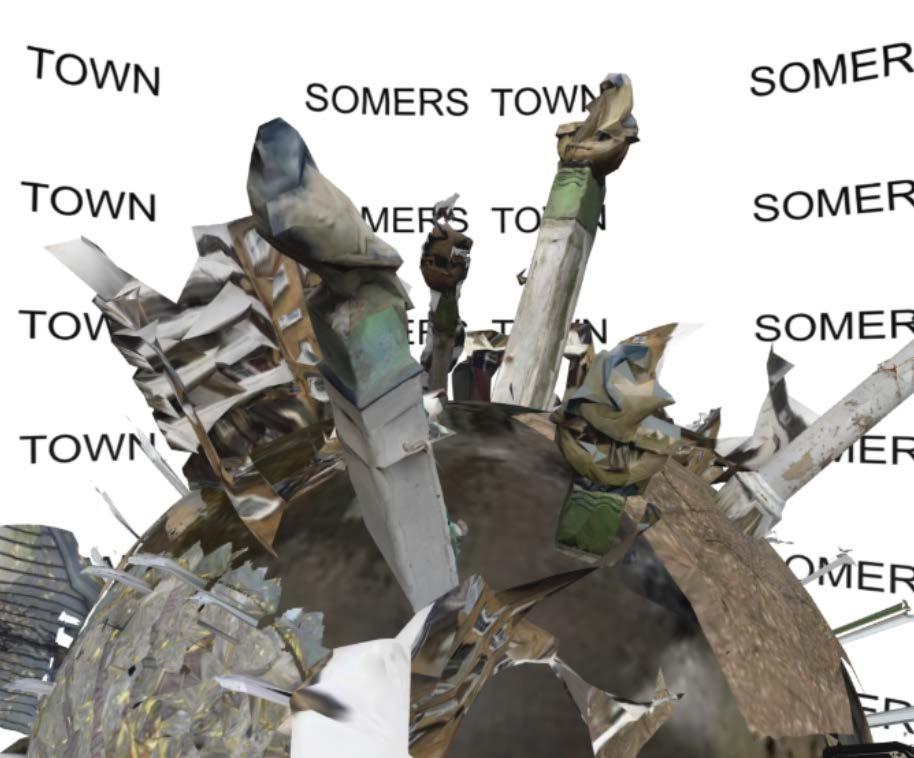
THE EXPERIENCE The ‘Scanathon’ has been developed in Euston, London, to explore innovative ways for preserving, protecting, and valorising local heritage This practice employed a blend of walks, collaborative design sessions, 3D modelling and reconstruction techniques to recreate the lost Gilbert Bayes finial sculptures that once adorned communal washing line poles in Somers Town during the 1920s and 1930s social housing reforms By digitally recreating these
sculptures, the Scanathon not only sought to honour the historical significance of the original artworks but also to revitalise collective memories tied to them Furthermore, by involving the community in the process through open-source 3D scanning, and by drawing upon oral history and local knowledge, this practice helped cultivate a sense of ownership and engagement in the preservation of cultural heritage. In a subsequent phase, the 3D reconstructions of Gilbert Bayes’ finials have undergone further enhancement, now serving as key components of an Augmented Reality Heritage Trail spanning sixteen locations across Somers Town. This innovative trail intertwines heritage narratives and artefacts, presenting them as immersive 3D digital images, accompanied by audio and video content accessible through smartphones and tablets.
SIGNIFICANCE Innovative technologies for heritage protection and preservation can play a valuable role in bringing art back into everyday life. By recreating lost artefacts and engaging the community in the process, proactive cultural stewardship can be cultivated. This inclusive approach fosters community pride and social cohesion and enhances the locality's attractiveness for residents, tourists, and businesses Furthermore, initiatives like the Augmented Reality Heritage Trail generated from the Scanathon's digital reconstructions offer innovative experiences of places and educational opportunities, promoting cultural understanding.
Augmented Reality Heritage Trail
Restored and recovered lost heritage Promoted heritage preservation through digital technologies and community participation Heritage locations connected through the augmented reality trail
Where: Trafaria, Lisbon (PT)
When: 2023-2024
Promoters & Collaborators: NOVA University, Marta Miranda, Trafaria’s people and communities
Target groups: Residents from old and new generations
Type of space: social and gathering spaces and digital environments

THE EXPERIENCE Documentary practices and social media platforms offer new avenues for telling the character of places through collaborative and participatory ways. In Trafaria, podcasts were used as an anthropological-artistic approach to the narration of the area through community voice. Addressing pressing issues such as housing, climate risk, loss of identity, displacement, and more, a podcast series was developed consisting of 12 different episodes streamlined on Spotify and YouTube Each episode is told through the voices of locals, and was developed in a mixed environment of musical café-concert, spontaneous speech, informal interviews and story-telling. Similarly, documentary practices were further explored to develop an experimental video documentary about Trafaria. The documentary was produced collaboratively with several generations of local people, who were invited to participate in the making of the film: in the choice of themes, places, frames, schedules, actions, and viewpoints At TRAFARIA 2023 seeks to critically respond to the mainstream media portrait of Trafaria as a picturesque fisherman’s village in Lisbon’s suburbs, empowering the self-representation of the community via an extended portrait of its fundamental traits, history, needs and expectations.
SIGNIFICANCE The significance of this initiative particularly emerges in its use of documentary practices and social media to empower communities to narrate their own stories. Through podcasts and experimental video documentaries, locals address pressing issues and shape the narrative around their fundamental traits, needs, and expectations By streamlining these productions on platforms like Spotify and YouTube, the initiative challenges mainstream media portrayals and fosters a deeper understanding of community complexities Ultimately, it promotes empathy, awareness, and solidarity, contributing to more inclusive and empowered communities.
Fostered sense of identity and shared place
Created lasting cultural products witnessing local stories and voices 12 Podcast episodes and documentary +1
Narrating voices from the local community

Europeans stand at a pivotal moment. The ‘loneliness epidemic’ is on the path to becoming the plague of our times, with health consequences likened to smoking 15 cigarettes per day. According to the 2019 European Social Survey, 18% of Europeans experience social isolation, meeting with relatives, friends, or colleagues only once a month or less. Recognising the gravity of this issue, the World Health Organization established a Commission on Social Isolation and Loneliness in November 2023, highlighting that ‘1 in 4 older people experience social isolation, and between 5 and 15% of adolescents experience loneliness’.
As our interactions with others decrease, so does our trust in them, leading to feelings of insecurity and defensiveness Ultimately, this erodes our sense of community Without a strong community bond, the proximity experienced in cities becomes a threat rather than a resource It falls upon city-makers to imbue proximity with positivity, ensuring that access to local services, social prescribing, and community support are prioritised over increased surveillance and policing
Access to public spaces, feeling safe in the streets, opportunities for social encounters, and residing in socially vibrant neighbourhoods are all integral components of a desirable and liveable city When combined and pursued holistically, these objectives form a preventative approach to urban life - one that invests in making the city enjoyable for all, fosters trust and social connections, and reduces reliance on reparative and punitive measures
The topic of urban liveability - including through the lens of safety and security, social connectedness, proximity, and conviviality - underpins several EU policies and initiatives These initiatives are guided by a holistic vision aimed at enhancing liveability across the diverse tangible and intangible components that constitute our intricate urban landscapes This includes not only aspects like housing stock, public transportation, and public spaces but also social and cultural programming, community development, and beyond. For instance, the Urban Agenda for the EU focuses on key thematic areas such as housing, mobility, and sustainable land use, with the goal of fostering convivial and liveable urban environments Similarly, under the Cohesion Policy framework, the EU channels investments into projects that bolster safety, conviviality, and liveability in both urban and rural areas, emphasising the necessity of integrating social, economic, and environmental considerations into urban planning and decision-making processes Within the Horizon Europe programme, cities can find unique financial support for testing and scaling innovative solutions across multiple fields, leveraging cross-sectoral collaborations and open science practices to this aim The DUT Partnership further provides funding and capacity-building opportunities to urban projects that delve into proximity and short-distance models within the framework of '15-minute cities’ These projects may encompass a range of focuses, including the integration of diverse functions within urban spaces, redesigning personal mobility and logistics options, and the revitalisation of public spaces to foster social vibrancy. Lastly, the European Green Deal stands as the overarching strategy for the EU and embodies its commitment to creating liveable urban environments for all citizens, with a focus on sustainability, inclusivity, and innovation
Urban regeneration projects striving to achieve safety, conviviality, and liveability objectives can generate multiple co-benefits that enhance resilience, vitality, and social innovation in cities. In the first instance, focusing on safety with preventative design approaches can help reduce crime and antisocial behaviours, while fostering a sense of security and confidence in social interactions among residents. Socially vibrant and convivial public spaces such as streets, squares, and parks can encourage interactions and cultivate community bonds, serving as antidotes to digital addiction, loneliness, and mental illnesses Similarly, integrating quality playgrounds and open-air areas dedicated to outdoor sports and movement help

foster active and healthy lifestyles particularly among the young generations, working as effective measures for preventative health and well-being Furthermore, endorsing liveability in sync with proximity and neighbouring services can create new and better opportunities for revitalising civic local economies, particularly by sustaining access to innovation among community groups, associations, and social enterprises that provide services of general interest like education, healthcare, social assistance, culture and recreation, and more.
Although urban regeneration projects across Europe seem to increasingly prioritise liveability and quality of life, numerous challenges persist that may impede their effectiveness Narrowed understandings of safety as a matter of mere surveillance and citizens’ control can hinder the implementation of preventative measures, undermining efforts to address safety concerns and foster community engagement Moreover, aligning the interests of diverse stakeholders, including government agencies, community organisations, businesses, and residents, is crucial but often complex and time-consuming, leading to delays and compromised outcomes. Historic disinvestment, social inequalities, and physical deterioration in certain neighbourhoods necessitate comprehensive approaches which, if not early and holistically planned, may paradoxically exacerbate deprivation and decay. Demographic shifts, cultural changes, and technological advancements further complicate urban regeneration projects, highlighting the need for flexible and adaptive approaches that acknowledge evolving urban lifestyles. Moreover, public spaces are often at risk of shrinking due to ongoing privatisation and marketisation dynamics, which transform them into commodities and fuel gentrification forces These processes typically prioritise profit over the public good, resulting in exclusive urban areas that ultimately benefit only a few.

There are numerous avenues for temporary use to contribute to the realisation of safety, conviviality, and liveability objectives within urban regeneration projects. One effective approach is to leverage these practices to facilitate social gatherings and self-organised events in vacant spaces. By mobilising existing communities and organisations, temporary interventions can breathe life into empty or dormant areas, fostering social interactions and community cohesion. Moreover, through the creation of temporary spaces or events, city-makers can showcase local businesses, cultural initiatives, and community organisations, so that they and their audiences take pride in living in a vibrant area Furthermore, temporary interventions provide valuable experimentation grounds for proximity services, allowing stakeholders
to test different locations and formats and better understand the demand before committing to long-term offerings. Tactical and temporary interventions that explore community rituals and celebrations - such as BBQs, residents’ and workers’ images reproduced through 3D printings over streets and former industrial buildings’ walls, community kilns, and neighbourhood festivals - can accelerate the sense of belonging and connectedness, strengthening experimentation, community engagement, and revitalisation
Drawing from our experience in T-Factor, below is a non-exhaustive list of possible areas of intervention for temporary use under this thematic mission:
Social Gatherings and Events: facilitating community events such as festivals, markets, concerts, social dinners, and outdoor movie screenings to foster social interaction and community cohesion.
Public Space Activation: transforming vacant and underutilised spaces into temporary parks or recreational areas to enhance quality and attractiveness of public spaces
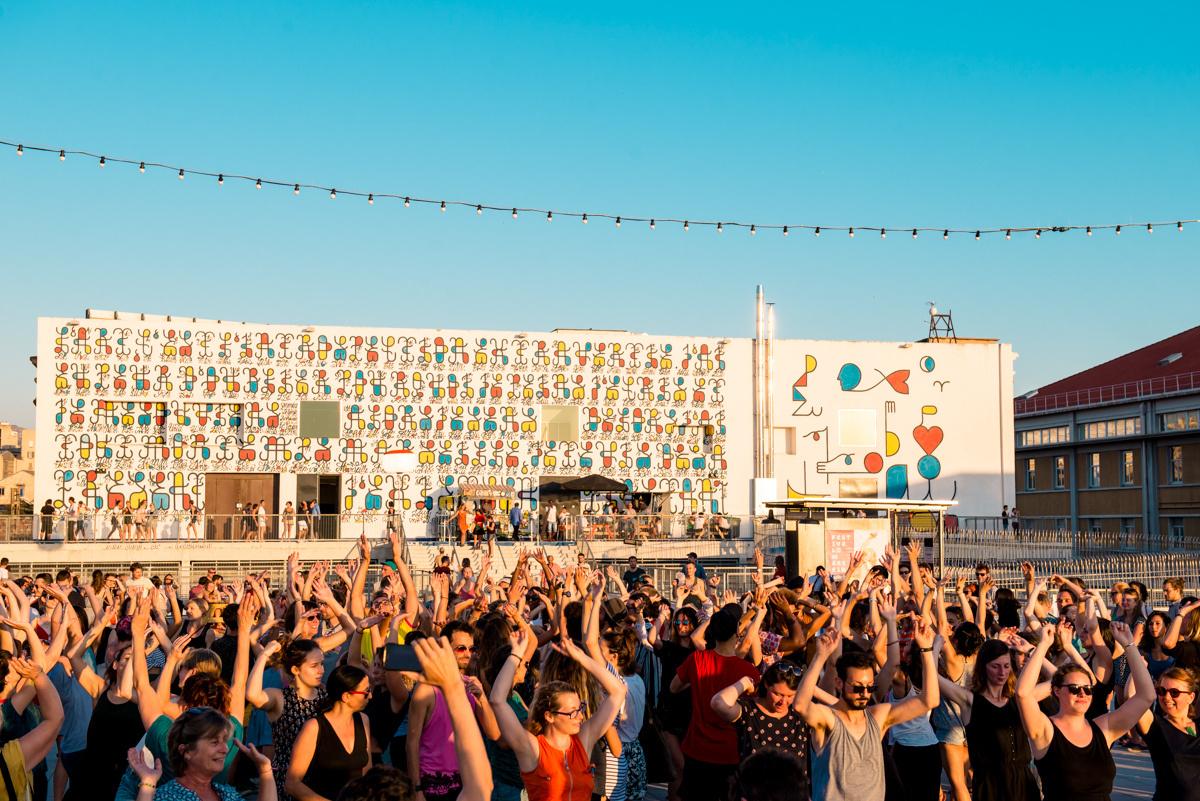 Terrace, Friche la Belle de Mai.
Terrace, Friche la Belle de Mai.
Art Installations and Cultural Exhibitions: curating temporary art installations, street art projects, and cultural exhibitions to enhance the aesthetic appeal of urban environments and promote cultural exchange.
Playful and Interactive Installations: creating temporary playgrounds, interactive art installations, and outdoor games to encourage playfulness, creativity, and social interaction among residents of all ages.
Community cleaning and upgradings: facilitating and organising sessions of public space’ cleaning and upgrading, for example through lighting, decoration, and wayfinding systems
Public Health and Wellness Programs: organising temporary fitness classes, yoga sessions, and wellness workshops in public spaces to promote physical activity, mental health, and wellbeing.
Community-Led Initiatives: empowering local communities to propose and implement their own temporary projects, events, and interventions that address specific needs and priorities within their neighbourhoods
Simplicity and agility in execution. Temporary use initiatives may fall into the trap of overcomplicating matters with elaborate planning and theoretical designs. While these elements have their place, the priority lies in swift action Sometimes, offering a space for gatherings or organising simple activities like social dinners and leisurely walks can lay the groundwork for more elaborate temporary interventions down the line.
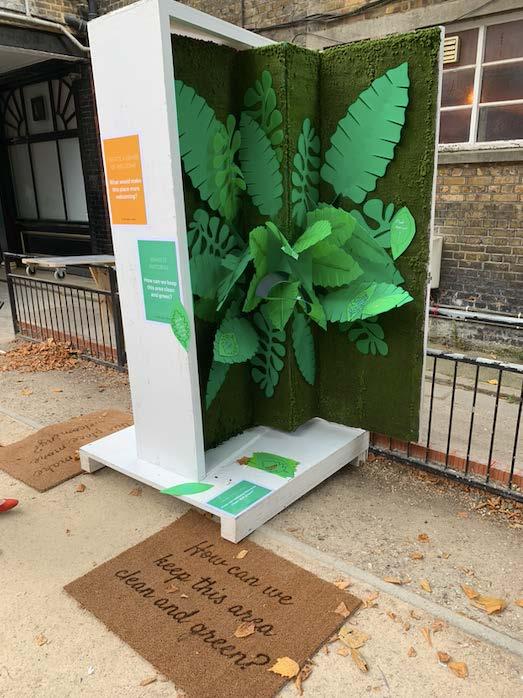
Holistic Approach. While this aspect applies to all T-Factor’s missions, addressing and integrating the objectives of safety, conviviality, and liveability holistically within temporary interventions strengthens opportunities for cascading benefits and spillover effects For example, using street art for storytelling trails and wayfindings that celebrate community stories can not only foster conviviality, but also instil pride and respect for common resources, challenging mainstream perceptions of public spaces as necessarily subjected to vandalism and antisocial behaviours.
Knowledge sharing and capacity building. Sharing knowledge and best practices with other communities and stakeholders can help build capacity and foster learning. By documenting experiences, lessons learned, and success stories, temporary use projects can inspire and inform present and future initiatives aimed at promoting safety, conviviality, and liveability, enhancing synergies and better use of resources.


When designing a temporary use on Safety, conviviality & liveability, consider the following elements as possible points of departure or reflection:

Cultural organisations; community organisations; well-being and health experts; anthropologists; food and foraging experts; cultural industry players; individuals or groups related to local traditions (dance, food, embroidery); artists and creatives.

Communal spaces; green spaces; plazas; streets and pedestrian zones; containers and modular units; community centres and civic buildings; public libraries

Community building; collect bottom-up needs; improve comfort and appeal of public space; set up social spaces; enhance the feeling of safety; generate ideas for long-term planning

Increase the area’s attractiveness; improve well-being; improve safety; stable and accessible spaces for community-organised initiatives; social diversity; enhance the sense of belonging; novel proximity services

Top-down events that ignore pressing needs on the ground; little inclusiveness of initiatives (for the jargon, promotional material, and the way the activity is structured); putting different demographics in the same project with little planning for integration; cultural, gender, ableist or racial bias when defining safety and inclusiveness requirements.


Where: Trafaria, Lisbon (PT)
When: 2023-2024
Partners & Collaborators: NOVA University, Studio Atelier 20 Ceramica, EDA Association
Target groups: Residents
Type of space: outdoor space

THE EXPERIENCE Wood-firing and alternative ceramic firings hold potential not only for creating stunning ceramic pieces but also for fostering community cohesion and connection. This practice was explored in Trafaria as part of the cultural and arts-led meanwhile programming developed by T-Factor on site.
As participants come together to load the kiln, feed the fire, and engage in lively conversation, a sense of camaraderie emerges, reminiscent of ancient gatherings around a campfire The anticipation of witnessing the transformative power of high temperatures on the ceramic pieces adds an element of excitement and surprise to the experience, further enhancing its allure. The development of the Community Kiln comprised building several kilns with and for the community, some of an ephemeral nature, and carrying out firings in which the local population was actively involved The concept of a Community kiln extends beyond mere ceramic production; it entails the collective construction of kilns, both ephemeral and permanent, with active participation from the local population. These firing events become true celebrations, where individuals of all backgrounds come together to share the joy of creation and discovery. The success of this initiative led the promoters to structure a more permanent programme
SIGNIFICANCE The Community Kiln underscores the significance of hands-on engagement with ceramics, highlighting its potential to foster social relationships and community bonds through conviviality. Through wood-firing and ceramic firings, participants gather to load the kiln, engage in conversation, and witness the transformative process The development of Community Kilns involves building kilns with and for the community and fostering active participation in firing events These gatherings become celebrations of creation and discovery, highlighting the potential to strengthen community bonds and create lasting cultural impact
Ceramic pieces created Mobilised volunteering and bottomup support Created joyful and intimate experience Participants from different age groups and cultural backgrounds
Where: Euston, London (UK)
When: August 2022-April 2023
Promoters & Collaborators: Community Champions Regent’s Park, Fitzrovia Youth in Action, Old Diorama Arts Centre (ODAC), Camden Council Parks and Open Spaces Team and Euston Development Team, University of the Arts London, Target groups: residents at large
Type of space: streets and squares

THE EXPERIENCE The Regent’s Park Estate Story Trail is a resident-led Public Art Trail inspiring creative public realm improvements to the neighbourhoods of Regent’s Park Estate in Camden The artworks celebrate the people, places and many (hi)stories and identities of the Regent’s Park Estate community. Each artwork tributes to the area’s heritage and helps celebrate the diverse and resilient communities of the past, present and future. Eleven installations were developed across the estate and wider ward, relating to each of the site-specific locations, selected by residents The Story Trail was first conceived during the pandemic between residents and Community Champions Regent’s Park, a public-health funded social action project managed by Fitzrovia Youth in Action – created, with, by and for the local community. The Story Trail is produced by Old Diorama Arts
Centre, in partnership with the Public Collaboration Lab and Design Against Crime Lab at Central Saint Martins and Camden Council Parks and Open Spaces Team It combines local heritage and identity, artistic interventions and wayfinding and contributes to community safety and public realm improvements across Regent’s Park Estate.
SIGNIFICANCE By combining art, community engagement, and public realm improvements, the Story Trail is an example of how temporary use can support resident-led initiatives in urban revitalisation that contribute to safety and convivial experiences of public space Removable material signposts are a visual experiment to cultivate the local community’s sensitivity to local history and its interest in knowing more.
11
Installations providing wayfindings across the area and championing local stories
Empowered communities in public realm improvements
Unveiled stories and layers of meaning for local residents
No acts of vandalism to the installations witnessed
Contributing to a lively neighbourhood
Where: Aleksotas, Kaunas (LT)
When: 2022-2024
Promoters & Collaborators: Kaunas Fortress Park, Kaunas University of Technology, Kaunas Municiplaity, Design Friends, DesignLibrary Kaunas, TAKTAK
Architektur+Szenografie, Communa, Vytautas Magnus University, NGO Kulturos dirbtuve, Ryto Ritualas, Kaunas 3022, Aleksotas Community center
Target groups: local residents including children and families, citizens at large
Type of space: heritage complex

THE EXPERIENCE The creation of the Kaunas Aleksotas Innovation Industry Park (KAIIP) is a development project with national significance, aiming to become a landmark of innovation able to attract investment and foster national growth. Due to regulatory constraints, the nearby Kaunas Fortress Park has been the privileged space of intervention, hosting a variety of cultural and green activities and temporary uses over time The stable facility Kaunas Fortress Community Space has been tested as the key location for the local community to participate in meanwhile activities An urban garden served as the focal point for experimenting with new facilities and services on-site. Educational programs and capacitybuilding activities, particularly focusing on biodiversity and circular design, effectively engaged citizens starting in summer 2022 Events included temporary
urbanism workshops for architects, lectures, guided tours, a collection of citizens’ memories and stories about the area, a camp for children from vulnerable families, and a Christmas decoration workshop.
SIGNIFICANCE The lack of clear guidelines for temporary use in Kaunas, compounded by national-level operational hurdles, posed challenges for the pilot project, which was met with initial resistance from municipal authorities However, creating a partnership with Kaunas Fortress Park marked a significant breakthrough. This collaboration not only facilitated the exploration of areas adjacent to the KAIIP but also allowed for the demonstration of a way to intervene outside the ‘red line of intervention’, with positive effects for the whole area. The pilot initiatives at Kaunas Fortress Park have garnered strong resonance among residents, who now perceive it as a vibrant community asset, better integrated into their surroundings.
1 Community Space created
Empowered agency in placemaking Physical installations for space improvement and upgrading 7 among children and youth actively involved throughout placemaking activities

More than five decades have passed since the ‘right to the city’ concept appeared in the well-known book ‘Le Droit à la Ville’ by Henri Lefebvre Since then, while the right to the city as space for political expression has been exerted by multiple movements worldwide - Arab Spring, Occupy Wall Street, and Extinction Rebellion, to name a few - global phenomena like neoliberal policies, financial austerity, and surveillance measures have eroded the right of individuals to live and thrive in the urban space
Cities that encourage citizen participation in resource management, urban design, and service innovation harness the collective wisdom of their inhabitants, enabling a transition where the ‘right to the city’ is not just about accessing what already exists, but rather a fundamental right to change it. Given their proximity to citizens, cities often serve as labs for experimenting with social policies, encountering grassroots initiatives and real-life challenges ahead of national governments. Furthermore, their close ties to communities enable them to combat xenophobia, transphobia, ableism, and other forms of hate by legitimising and supporting vulnerable groups and activists. In an era marked by uncertainty and growing polarisation, the creation of inclusive and empowering cities stands as a beacon of hope for a more harmonious future.
Expanding and evolving the right to the city under the pressing imperative of transitioning to sustainable cities involves embracing the notion of just transitionthe idea that climate neutrality and social justice are inseparable objectives in ensuring inclusive and equitable quality of life within planetary boundaries. An updated right to the city necessitates radically redesigning how we consume, produce, and live while deeply reflecting on the meaning of democracy and democratic access to cities in contemporary societies. It requires building collective capacity, agency, and legitimacy throughout societal transformation journeys. Moreover, in the pursuit of carbon-neutral cities, recognising and integrating the rights of non-human entities emerges as an essential component of just transitions
Equality and social justice are integral objectives of just transitions. The European Green Deal acknowledges that achieving climate neutrality necessitates the creation of equal and inclusive opportunities for all to access and benefit from the opportunities presented by the transition to green and digital economies. As the primary EU initiative translating the Green Deal objectives into our living spaces and experiences, the New European Bauhaus places emphasis on inclusion within the built environment, aligning it with sustainability and aesthetics. The Just Transition Mechanism (2021-2027) provides financial support for alleviating the socio-economic impact of the transition in the most affected regions More broadly, the Charter of Fundamental Rights of the European Union and the European Social Charter represent foundational components of the continent’s human rights architecture The Gender Equality Strategy (2020-2025), the Strategy for the Rights of Persons with Disabilities (2021-2030), and the LGBTIQ Equality Strategy (2020-2025) further strengthen the EU's commitment to promoting rights and equality across various dimensions of society. Regarding social inclusion, the European Pillar for Social Rights stands since 2017 as a key reference framework, covering areas such as equal opportunities and access to the labour market, fair working conditions, social protection and inclusion. Within the umbrella of structural funds, the European Social Fund (now European Social Fund Plus, ESF+) has worked for a long time to support employment, social inclusion and capacity-building among the most vulnerable groups, including by financing social innovation projects within the new wave of the EaSI programme. In the face of diverse forms of discrimination and exclusion, compounded by the effects of global dynamics, cities emerge as focal points where the imperatives of inclusion and equality are most pressing and urgent. City planners and leaders are increasingly called to address this crucial mission, fostering environments that empower residents, dismantle discriminatory practices, and champion diversity and inclusion
Inclusion and social justice in cities are not only a moral imperative but also a catalyst for sustainable development, community cohesion, and the well-being of urban populations It involves an ongoing commitment to dismantling barriers and fostering a sense of belonging and dignity for every individual within the urban fabric Ensuring inclusivity and equity in urban regeneration processes remains a persistent challenge. Disadvantaged communities,

marginalised groups and vulnerable populations may face barriers to participation and access to benefits from regeneration initiatives. Addressing social disparities and promoting social cohesion is essential for creating truly inclusive and equitable urban environments Including universal design and design-for-all considerations throughout developments’ choices and strategies can enhance access to basic services such as public transportation, quality public space, and amenities. Mainstreaming an approach that involves residents in decision-making processes can empower marginalised communities to have a say, making sure that their needs and aspirations are considered and integrated into the developments. This starts from actively anticipating gentrification Often a byproduct of urban regeneration, gentrification can not only be contained by involving early-on in decision-making the populations it is likely to displace, but also with active policies such as fair taxation, affordable housing and strict measures for vacant properties Countering gentrification will also likely include a thorough consideration of existing services and surveying the population to detect gaps in their localisation, usability, and overall inclusiveness.
Another area of intervention is public spaces, which do not offer uniform levels of comfort, access, and opportunities for growth to all individuals. Women, girls, sexual and gender minorities, POC and physically impaired individuals, in particular, experience disparities compared to the stakeholder group predominantly represented in public space design, namely heteronormative, ableist men. Urban regeneration is an opportunity to collectively redefine the qualities of public space to serve a larger part of the population, i e through ramps, public lighting or replacement of narrow passages
Urban regeneration is also an opportunity for infrastructuring social equality and the just transition, for instance by influencing the extension of public transport to underserved areas, allowing its inhabitants to improve their ability to commute for work and ditch private fossil fuel transportation Interventions can also focus on bringing green spaces and biodiversity in landscapes characterised by concrete, enhancing inhabitants' health and well-being. Urban regeneration initiatives that prioritise inclusive engagement and rights to cities have the potential to create more equitable, sustainable, and liveable urban environments f
Temporary urbanism offers a unique platform for empowering citizens to reclaim and shape public spaces and services, fostering more democratic decision-making processes regarding their utilisation. In its informal nature, temporary urbanism provides an environment where social groups can organise in

a bottom-up, flexible manner, even if they lack official recognition from formal organisations This allows for the representation of diverse voices and perspectives that may otherwise be overlooked in traditional planning processes. Furthermore, temporary urbanism can serve as a valuable opportunity to gather feedback and reassess inclusivity criteria through real-life case studies By engaging citizens directly in the co-creation and evaluation of temporary spaces, cities can gain valuable insights into the needs and preferences of their communities. This feedback loop facilitates iterative improvements and adjustments, ultimately contributing to more inclusive and responsive urban environments. Moreover, temporary urbanism opens doors for the third sector to innovate business models and services that address specific community needs. Non-profit organisations, community groups, and social enterprises can leverage temporary spaces to pilot new initiatives, test innovative solutions, and engage with residents in meaningful ways. This experimentation fosters a culture of innovation and collaboration, driving positive social impact and sustainable urban development
Urban regeneration is also an opportunity for supporting social equality and the just transition, for instance, by influencing the extension of public transport to underserved areas, allowing its inhabitants to improve their ability to commute for work and ditch private fossil fuel transportation Interventions can also focus on bringing green spaces and biodiversity in landscapes characterised by concrete, enhancing inhabitants' health and well-being. Urban regeneration initiatives that prioritise inclusive engagement and rights to cities have the potential to create more equitable, sustainable, and liveable urban environments for all
Drawing from our experience in T-Factor, below is a non-exhaustive list of possible areas of intervention for temporary use under this thematic mission:
Street Art and Graffiti Festivals: Temporary street art and graffiti festivals can transform neglected urban spaces into manifests of rights and inclusion, inviting artists, rights activists, and community members to collaborate on murals, installations, and performances that reflect personal and social identities and cultures.
Accessible public services: ensure that public services, such as healthcare and social services are accessible to all residents, for example through temporary service centres and mobile outreach programmes.
Public awareness campaigns: launch public awareness campaigns to foster inclusivity, tolerance, and diversity. Challenge stereotypes and biases through educational initiatives promoting a more inclusive mindset within the community

Diversity training: provide cultural competence and diversity training for city officials, public servants, and other stakeholders to foster understanding and respect for diverse communities
Community participation: actively engage residents, especially those from marginalised and underrepresented communities, in decision-making processes.
Accessible infrastructure: design and maintain urban infrastructure with universal accessibility, accommodating the needs of all residents, including those with disabilities
Support for social enterprises: encourage the growth of social enterprises and community-led initiatives that address social challenges, creating economic opportunities and enhancing the well-being of marginalised communities.
Get-together spaces: provide temporary low-budget offices for civil society organisations and informal groups that represent underserved or threatened social groups, such as transgender support networks, services for the homeless and migrant communities celebrations.
Inclusive and accessible design: include different sets of the population such as women, ethnic minorities, LGBTQ+, people with limited mobility and physical impairments in the design of public spaces and facilities, so that their fruition can be universal.
Smart cities collaborations: develop an interdisciplinary digitalisation plan that focuses not only on technology provision, but also on aspects such as the legal, inclusiveness and environmental implications of digitalisation, which require a wide array of stakeholders
Asset-oriented approach. Urban spaces rarely stand empty, unanimated, or abandoned. Often, community groups and social organisations have been able to self-organise and develop effective approaches to counter the lack of services and amenities Reaching out and supporting these groups can help accelerate time to action and positive results while amplifying bottom-up engagement.
Make people feel seen. Easier said than done, inclusiveness is a fine art that requires soft skills and listening abilities Making sure that the people interfacing with the public are aware of the context, know how to adjust their message to it, have an understanding of the challenges faced and are ideally trained in techniques such as non-violent communication is a key success factor. It is also important to let communities speak for themselves, for instance, by identifying and including community champions in open consultations. Pushing for immediate outcomes can be counterproductive: take the time to understand who you are dealing with and gain their trust.
Visible Outcomes. Inclusive processes should not forget about delivering visible and tangible results, such as opening up new spaces, or market stalls, to develop trust and sustained community involvement Physical manifestations of open concertations symbolise real progress and work as incentives for engagement. By transforming abstract ideas into tangible benefits, it is possible to cultivate a sense of shared pride and ownership
Role of arts and culture. Prioritising art-mediated and experiential community gatherings can help break cultural and linguistic barriers From community dinners to participatory artworks, simple get-together formats are a useful ice-breaker for elaborating more complex interventions.
Accountability People living near urban regeneration areas often suffer from some forms of engagement fatigue: they have been approached over the years by several people or organisations, who have left as soon as their mission or budget ended, leaving little long-term results behind It is important to keep promises and make the process as open and transparent as possible so that participants are aware of what is happening, how their inputs are being used, and whether there is an end date.


When designing a temporary use on Inclusive engagement & rights to cities, consider the following elements as possible points of departure or reflection:
Community organisations; community champions; representatives of vulnerable groups; artists and creatives; climate activists


Type of spaces
Communal spaces; streets and squares, playground areas; green areas TU short-term goals
Community building; collect bottom-up needs; increase safety; provide physical and intangible places for gathering and expression; generate ideas for long-term planning.

Improve well-being; boost social inclusion; strengthen the sense of belonging; cultivate diversity and social mix; build a sense of hope and positive projection into the future; increase the attractiveness of the area

Beware of ableist and heteronormative communication; showcase projects that leave no legacy but a sense of frustration; fail to recognise and value the knowledge and work of bottom-up organisations; little effort to understand vulnerable groups’ needs.
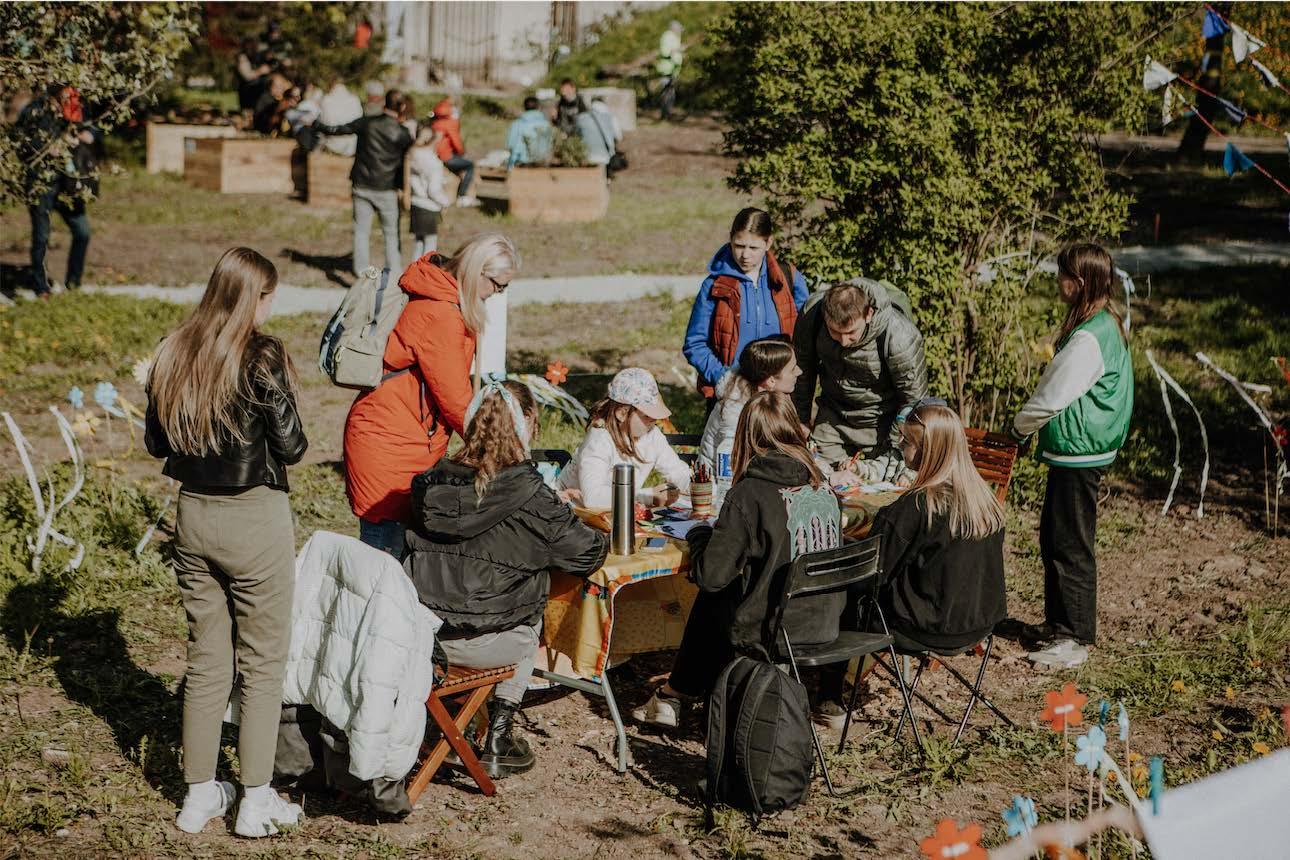

Where: Zorrotzaurre, Bilbao (SP)
When: 2023 - Ongoing
Partners & Collaborators: Petit Muller, Bilbao Ekintza, Espacio Open, Godot Studio, Mondragon University, IED Kunsthal, University of Deusto, Tecnalia, Abad Design
Target groups: local grassroots organisations, Universities, local authorities, residents
Type of space: online and across multiple city venues
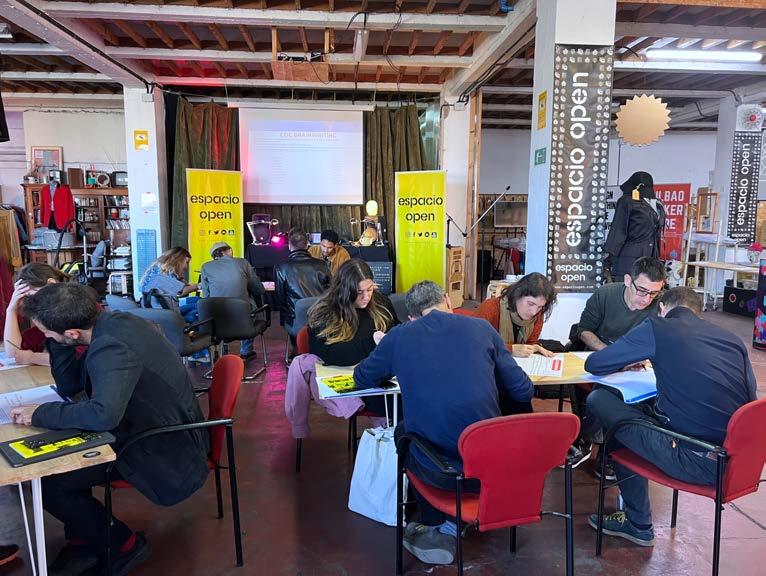
THE EXPERIENCE The Civic Design Council represents a prototyping experiment in participatory decision-making and governance currently unfolding in Zorrotzaurre, Bilbao. This initiative builds upon existing relationships and collaborations among universities, grassroots groups, creative communities, and local authorities, nurtured through the civic curriculum (see related box) Through these partnerships, local actors have developed a vested interest and growing confidence in furthering their collaborations Importantly, this experiment has heightened awareness among local actors about the necessity of establishing a flexible and inclusive form of collaborative governance for the present and future of the area.
Such a model is essential for representing diverse voices and interests within the formation of a local innovation ecosystem Currently comprising 11 organisations, primarily from higher education institutions, creative initiatives, and local T-Factor partners, the Civic Design Council aims to be an open and dynamic working group. However, challenges persist, particularly regarding its sustainability Key questions remain about the Council's structure, membership, mechanisms for active participation, decision-making processes, financing, and resource allocation Despite these challenges, the Council has already made significant strides, including gaining recognition and acknowledgement from local authorities. Its impact underscores the relevance of fostering civic engagement and agency in urban redevelopment initiatives, paving the way for more inclusive and responsive approaches to community development
SIGNIFICANCE The Civic Design Council is a pioneering initiative in Zorrotzaurre, championing participatory decision-making and governance in the realm of community development. The Council seeks to create a platform where diverse stakeholders can engage, fostering trust and cooperation, and be represented Its significance is particularly strong for areas undergoing regeneration, especially where local residents and stakeholders feel marginalised in decision-making processes and lack clarity about redevelopment plans By providing a forum for enduring engagement, processes like the one embodied by the Civic Design Council can help empower the community to actively shape its own future, fostering a sense of ownership and investment in the regeneration process 11
Organisations represented
20 Individuals involved
Government, University, Business & Community sectors represented Created a new ‘space’ of confrontation and decision for collaborative placemaking
Where: Xinhua Community Design Centre, Shanghai (PRC)
When: 2022 - ongoing
Partners & Contributors: Big Fish (Da Yu),
Tongji University College of Design and Innovation
Target groups: local residents
Type of space: refurbished industrial building with spaces for community activation
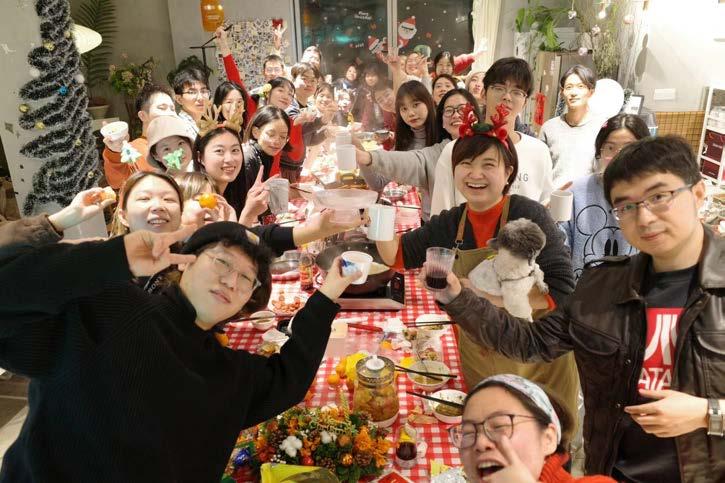
THE EXPERIENCE Managed by Big Fish, a social enterprise, the Xinhua Community Design Centre (CDC) serves as a dynamic co-creation space, fostering communication, collaboration, and active participation among residents Beyond its physical infrastructure, CDC functions as a vibrant learning space, nurturing social innovation and collective empowerment within the community At its core, CDC aspires to cultivate a democratic community life cycle and serve as a participatory hub for community development initiatives. Central to the ethos of CDC is the belief that involving residents in discussions on public affairs leads to the development and maintenance of relevant support systems for the community This approach not only strengthens social cohesion but also empowers residents to play an active role in shaping their collective future A compelling example within CDC is the story of Gao Ya, who initiated shared meals with neighbourhood friends using the underused industrial kitchen available in the community space. What
began as a simple gathering evolved over time into a sustainable employment opportunity - a restoration service providing daily meals for the community, a bakery offering daily deliveries of freshly baked goods, and event-based catering services. Moving forward, the CDC continues to serve as a catalyst for social innovation and community development, providing residents with the resources, support, and collaborative spaces needed to bring their ideas to fruition.
SIGNIFICANCE Gao Ya's initiative not only revitalised an underutilised space but also created meaningful employment opportunities and fostered a sense of belonging within the community Her story exemplifies the transformative potential of grassroots initiatives within the CDC, demonstrating how individual actions can ignite positive change and contribute to the overall well-being of the community
1 community service created
Fostered encounters and relationships at neighbourhood level
Impetus to local social entrepreneurship
Where: Aleksotas, Kaunas (LT)
When: October-December 2022
Partners & Collaborators: Futuribile, Kaunas University of Technology
Target groups: local communities, associations, and IT experts
Type of space: online and offline in indoor workshop facilities

THE EXPERIENCE In a context where physical temporary interventions were hard to deploy, the ‘Inclusive Urban Metaverses’ explored how placemaking can be supported by the collective and inclusive elaboration of digital territories twinning urban regeneration areas. In the "meanwhile" time towards the masterplan implementation, the digital model of Kaunas Aleksotas Innovation Industry Park becomes an extension of the city, a land of opportunities playing the role of a "digital social innovation sandbox" Its collaborative definition federates citizens around concrete needs and expectations that are hard to address in the physical world for infrastructural or cultural reasons, supporting community building, giving a novel identity to the place and cascading into traditional or digital community projects The activity is inscribed in the emerging field of urban metaverses It involved international and local experts as well as local communities and stakeholders in defining the theoretical and design framework of an urban metaverse oriented towards social justice. This line of work was crossed with a participatory process engaging local communities of citizens to build the concept for concrete metaverse use cases. It resulted in a manifesto and a final report containing inclusive design recommendations and insights from case studies
SIGNIFICANCE As cities worldwide gear up for the next phase of the "smart city" evolution and explore Extended Reality (XR) as a means to enhance services for citizens and optimise urban environments, the objective of this initiative was to establish preliminary guidelines to steer the Extended City toward social justice while fostering innovative connections among local stakeholders This initiative illustrates how developers of urban metaverse platforms can anchor their efforts in
the needs and expectations of citizens, resulting in tangible benefits Intervening at an early stage of a pilot program marked by stringent regulatory constraints for temporary urbanism, focusing on a virtual landscape was a strategic choice within the pilot's framework. By envisioning entirely new virtual districts of the city, participants were empowered to imagine outcomes that might be considered unattainable within the constraints of the physical world. This process not only yielded valuable insights and networks but also complemented other "traditional" urban development activities
3 Case studies of virtual districts
1 Manifesto
10 Design principles
New coalition of local actors working on epilepsy
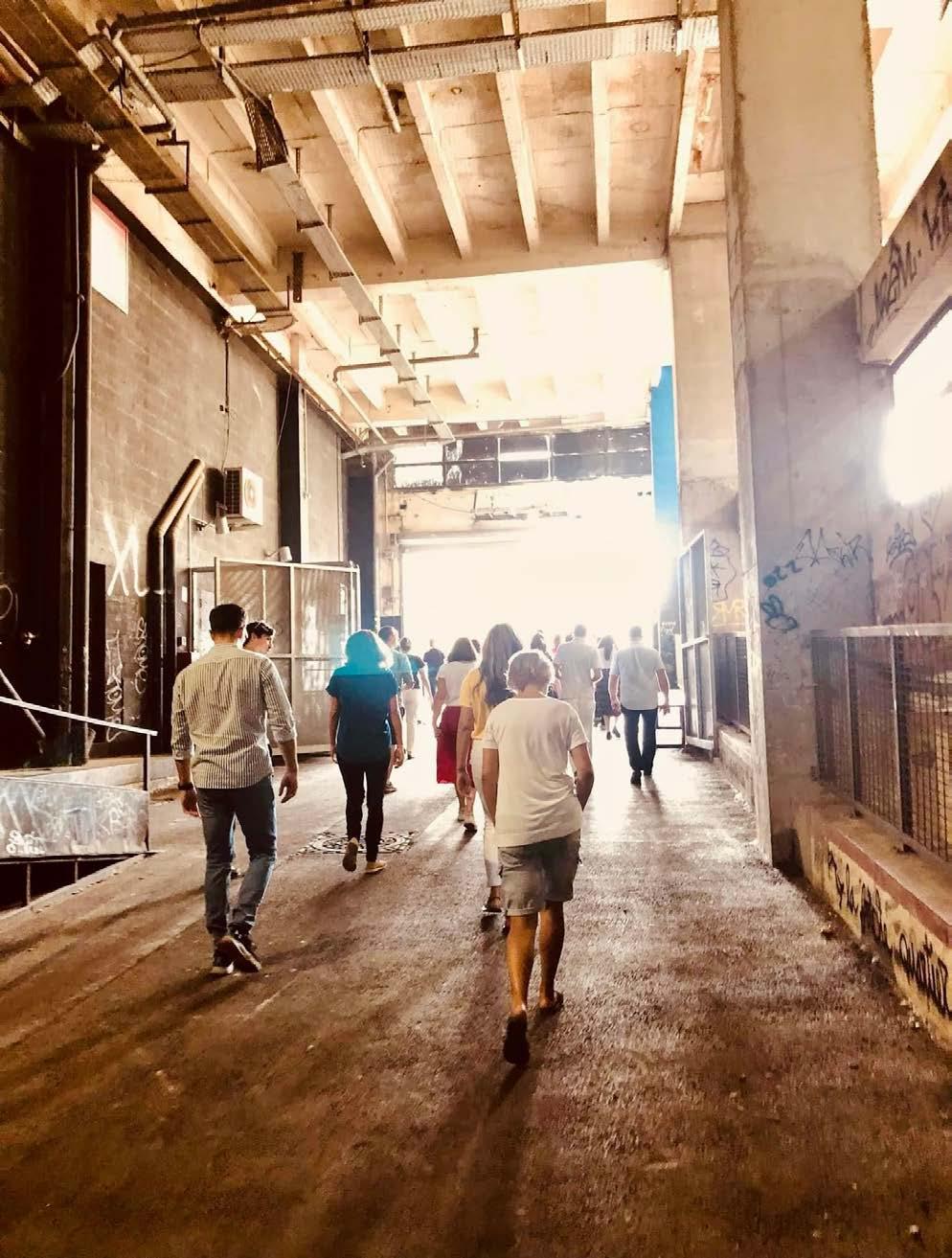 Friche la Belle de Mai, Marseille.
Photo credit: Laura Martelloni
Friche la Belle de Mai, Marseille.
Photo credit: Laura Martelloni
This book champions temporary uses as future-oriented practices steered toward inclusive, equitable, and sustainable cities In the face of major contemporary challenges that often feel disempowering or overwhelming for individuals to tackle alone, we believe that temporary uses are powerful ‘change-makers’ tools for collective envisioning, exploration, and experimentation within the context of urban regeneration areas
The examples and cases presented here have not just mobilised and engaged local communities through a diversity of placemaking experiments. Well beyond that, they contributed to seed novel, long-term urban missions by means of concrete activities and possibilities unlocked during interim phases of urban regeneration. Spanning experiments lasting one day, a few weeks, seasons, and years, and leveraging a variety of spaces such as green and blue areas, streets, squares, warehouses, heritage sites, and more, these cases demonstrate an alternative to passive, rigid, and top-down city-making - in ways that creatively weave time, space, and the strengths of local communities.

Our call for temporary use involves a deep reconsideration of these practices as a strategic, long-term tool to investigate, learn from, and transform urban environments. Embracing this shift implies orchestrating and curating various temporary urbanism initiatives into cohesive portfolios and thematic missions capable of mobilising and galvanising citizens, investors, and policymakers alike. Such an approach can be spearheaded by grassroots initiatives uniting for greater impact, as well as by policymakers and decision-makers committed to fostering sustainable urban regeneration. This strategic framework not only addresses the pressing imperative to advance environmental and social justice but also challenges the inertia towards change driven by economic interests, fear, and entrenched privilege. Temporary urban interventions provide a window of opportunity to explore innovative methods of community cohesion, foster biodiversity and nature-connectedness, project heritage into the future, nurture sustainable and circular economies, meet evolving service needs, enhance the quality of life, and amplify the voices of marginalised communities.
As a conclusion to this book, we propose ten points for temporary uses in urban regeneration that are key to the implementation of the six missions presented. We call them ‘refl(a)ction’ points as they not only emerged as recurring, critical dimensions of discussions and exchange during our journey in T-Factor, but
also because we believe these are worth consideration, analysis, and most importantly, concrete action and learning. Cities in Europe and worldwide are already fueled by practitioners, city-makers, and civic and climate champions who are foregrounding temporary use in many innovative ways, underscoring the presence of a diverse and dynamic ecosystem of ideas and practices Acknowledging the work of this ecosystem and supporting its development is crucial in advancing regeneration projects that are meaningful to the local context yet relevant to global challenges and goals of sustainable urban development.

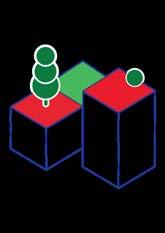
Contemporary 'wicked' challenges demand multifaceted, integrated solutions that acknowledge their complexity and systemic nature. While temporary use initiatives may seem limited by time and space, their true power lies in their ability to catalyse action and unite grassroots communities - in ways that neither governments nor developers can do. Embracing a portfolio logic involves launching numerous distributed experiments across neighbourhoods and urban areas, each aligned with thematic missions and based on awareness about local communities. These initiatives are strategically designed to complement and reinforce one another, contributing to broader objectives of sustainable and inclusive urban regeneration. A portfolio approach not only mitigates risk but also facilitates engagement with diverse communities, fostering a culture of experiential learning and innovation A successful portfolio strategy creates space for bottomup appropriation of the missions proposed, and keeps a degree of flexibility in its implementation. Furthermore, it helps to effectively manage the scale of temporary uses By implementing small-scale experiments that deliver immediate value to different communities, we can collectively present a compelling 'platform' of creative experimentation to high-level stakeholders This approach ensures that temporary uses resonate both locally and globally, amplifying their impact and influence in driving positive urban transformations.
The exponential acceleration of human impact on natural ecosystems can no longer be ignored by urban regeneration Nonetheless, addressing the topic in the context of temporary interventions, construction sites, and multistakeholder governance can become an overwhelming extra task. Sustainability and urban ecology considerations must be transversally incorporated into the regeneration plan at the level of the portfolio and of individual actions. While individual temporary uses may have different thematic objectives, the overarching approach must embed an active reflection on how to coexist and thrive with natural elements. By symbolically sitting natural elements and beings at the decision table, local coalitions operating in urban regeneration can generate new ideas, define environmental indicators, and turn available green areas into spaces for not only recreation but also education, care, and well-being Matters like materials sourcing, green spaces governance, noise pollution, waste
management and land occupation can be incorporated into the design at the level of each temporary intervention and contribute to fostering not only sustainability goals but also creativity and solidarity.
Urban regeneration efforts often overlook or undervalue the presence and unique contributions of local assets and resources Community groups, civic champions, creative hubs, social initiatives thriving in dormant spaces, and reclaimed natural habitats all play pivotal roles in shaping the vitality of urban areas. By leveraging temporary uses to map and provide impetus to these existing assets, we can expedite action on the ground while gaining valuable insights for iterative intervention. Valuing what already exists can cultivate more pluralistic, diverse, and vibrant urban regeneration processes, and ultimately lead to more inclusive and resilient communities Toward this purpose, it is important to deliberately create soft and hard arrangements for capacity building through placemaking. Engagement and participation should be rewarding and reciprocal, well beyond considering bottom-up access to space as the sole incentive Measures such as learning recognition of social action, payment for social service delivery, institutional support and visibility to community champions active in neighbourhoods and districts - among many others - should be explored and integrated within temporary use experiments
Prioritising underserved communities and communities that are hit the hardest by the disruptions of urban regeneration processes is paramount for temporary use and can increase their potential for shared value creation. It is crucial to understand the concerns and challenges faced by these groups, recognising that some individuals may be hesitant to participate due to uncertainties or lack of appeal in the activity, or simply the need to prioritise survival and making ends meet Language barriers, together with gender, racial and ableist bias, can hinder communication and trust To overcome these barriers, active collaboration with residents’ groups, youth associations, NGOs, social cooperatives and other stakeholders from across the social and civic economy should be sought, including securing temporary spaces that can be accessed rapidly on the one hand, and by introducing possibilities for ordinary and extraordinary temporary interventions within tenders and procurements for public services on the other hand Such collaborations can help earn trust and channel funding to initiatives and services that have a strong demand While they are important in any project
interfacing the public, here accountability and tangible results play a special role in making people feel heard and supporting a positive outlook towards the future. By keeping vulnerable groups in the picture and empowering them, temporary uses can prepare the ground for a diverse, multicultural and lively future district, averting gentrification and socio-economic homogenisation
Iterative and agile approaches to temporary use are key for these practices to be effective and capable of responding to existing and emerging needs and aspirations on the ground Moreover, a flexible approach proves beneficial for navigating rapid change and systemic risk inherent in temporary interventions and broader regeneration efforts Emphasising an exploration mindset throughout the process highlights the nonlinear nature of temporary use, where learning and adaptation occur continuously rather than sequentially. Furthermore, it underscores the need for a critical balance between maintaining a clear agenda and being responsive to evolving concerns and needs on the ground Moreover, while research and a deep understanding of the local context is a key precondition for impactful intervention, it is also important to get quickly on the ground The effectiveness of meanwhile activities could be significantly enhanced by initiating simple, practical community engagement activities and rapid prototyping as early as possible. Such an approach accelerates feedback loops and fosters a dynamic interaction between the project team and the local communities, leading to more immediate and relevant outcomes.

Securing endorsement from institutional and private decision-makers is crucial for unlocking the transformative potential of temporary use initiatives However, this is often fraught with challenges and risks Factors such as diffidence towards participation, regulatory ambiguity, safety concerns, financial uncertainties, and the perceived tension between temporary and permanent functions can impede or severely limit the support from decision-makers. To overcome these obstacles, proactive engagement with high-level stakeholders is essential This involves negotiating "windows of opportunities" for temporary use and fostering ongoing dialogue and exchange At the same time, the evolving landscape of urban regeneration necessitates a concerted effort to not only formulate bold plans and processes, but also to usher in new professional profiles and working methods.
Temporary use should come in sync with the exploration of novel professional profiles, roles, and skills able to facilitate bottom-up access and experimentation with these practices, and unleash new ways of addressing pressing shared challenges. Soft skills encompassing engagement, facilitation, communication, placemaking, creative curation, and collective leadership are key, next to the capacity to work in between communities on the ground, and the level of policy and institutional decision-making. These figures should work across municipal departments and technical offices, supporting temporary use demanders and offerers in navigating the landscape of administrative and legal requirements that are typically at play. Whether directly enrolled within municipalities, outsourced through public-private arrangements, or organised as distributed teams of facilitators across neighbourhoods and districts, such profiles and roles should become permanent resources within municipal organisations
7 Temporary uses and financial resources: allocating with flexibility and perspective
The effective allocation of financial resources is pivotal in fully leveraging the flexibility and adaptability of temporary uses. This underscores the importance of swiftly reallocating funds across budget categories to capitalise on new opportunities, possibilities, and insights Additionally, it is crucial that financial resources are available for investing in tangible assets and infrastructure, particularly in cases where accessing buildings and indoor spaces proves challenging Furthermore, it is essential to recognise that temporary uses don't necessarily mean minimal budgets While they may be more cost-effective than long-term infrastructure interventions, they still require time, professional expertise, and resources Supporting the promoters of temporary initiatives with financial stability and recognition increases the likelihood of generating positive impacts and lasting benefits.
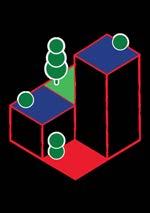
In areas undergoing urban regeneration, factors such as regulatory constraints, lack of policies for temporary use, safety concerns, and ongoing construction works can render them inaccessible. To navigate this challenge, one effective strategy involves activating adjacent areas through cultural programming and infrastructure enhancements. This approach entails identifying nearby cultural and social organisations and collaboratively initiating an open process to redefine or strengthen the area's identity Citizens are
encouraged to express their past memories and aspirations for the future within the evolving urban landscape By fostering a vibrant community atmosphere, these efforts can ultimately enhance the vitality of the entire area undergoing regeneration. Simultaneously, areas lacking regulations for temporary uses can utilise these activities to advocate for more favourable policies towards temporary urbanism By presenting novel evidence and data showcasing the benefits of temporary uses, decision-makers can be made more aware of the benefits of such approaches. This dual approach, combining grassroots initiatives with strategic policy advocacy, highlights the importance of promoting interim solutions for development sites constrained by regulatory limitations.
While the creation of shared value increasingly emerges as a central objective in urban development and regeneration plans, whether public or private-led, economic value and financial return on investment often retain priority Due to the lack of reliable metrics for measuring social and environmental value, decisionmakers frequently resist embracing holistic approaches to value creation, perpetuating economic values as the primary decision-making criterion. Moreover, social impact evaluations tend to focus on key performance indicators and 'hard' metrics of outreach and engagement, overlooking deeper, process-based dynamics crucial for strategic learning. Therefore, temporary use programs should endorse more holistic and exploratory approaches to impact evaluation, recognising temporary uses as practices unfolding within broader, complex systems of interaction and interdependencies. In addition to quantitative dimensions and metrics, the adoption of qualitative indicators and anecdotal approaches is essential This includes capturing lived stories and experiences to better capture and contrast diverse voices and perspectives, providing a more comprehensive and nuanced account of temporary use journeys.
A portfolio of temporary interventions should be curated with a clear vision of the desired legacy, operating with the overarching goal of improving, rather than exacerbating, the social conditions of the area Facilitating a 'just transition' between the past and present of an area entails ensuring representation of the diverse stakeholders involved and affected, and envisioning, designing, and implementing it collectively. Governance emerges as a crucial tool to establish the conditions for a just legacy. This requires the creation of communities with shared responsibilities and the development of tools and frameworks for cooperation
among actors from public bodies, research, business, civil society, and even considering non-human stakes Collaborative governance mechanisms succeed when they serve as a middle layer between formal and informal processes, streamlining bottom-up initiatives and informal actors from overly complex and costly procedures, while ensuring that the needs and motivations of bottom-up stakeholders are heard and represented in decision-making processes. Establishing simplified micro-governance structures at the hyperlocal level, but connected with municipal and other large-scale stakeholders, can serve as the best antidote against the threat of gentrification By empowering local communities to take ownership of temporary interventions and ensuring their integration into broader urban development plans, micro-governance structures can help safeguard against displacement and exclusion, while promoting sustainable and inclusive growth.

European Commission (1985) European Capitals of culture https://culture ec europa eu/policies/culture-in-cities-and-regions/european-capitals-of-culture
European Commission (2000). Charter of fundamental rights of the European Union. https://www.europarl.europa.eu/charter/pdf/text en.pdf
European Commission (2008) Covenant of mayors - Objectives and key pillars https://eumayors ec europa eu/en/about/objectives-and-key-pillars
Council of Europe (2016) European Social Charter https://www coe int/en/web/european-socialcharter/charter-texts
European Commission (2017) European pillar for social rights https://ec europa eu/social/main jsp?catId=1226&langId=en
European Commission (2018) A New European Agenda for Culture https://eurlex europa eu/legal-content/EN/TXT/PDF/?uri=CELEX:52018DC0267
European Commission (2019). European Green Deal: Communication from the Commission to the European Parliament, the European Council, the Council, the European Economic and Social Committee and the Committee of the Regions https://ec europa eu/info/strategy/priorities-2019-2024/european-green-deal en
European Commission (2020) LGBTIQ Equality Strategy (2020-2025) https://commission europa eu/strategy-and-policy/policies/justice-and-fundamentalrights/combatting-discrimination/lesbian-gay-bi-trans-and-intersex-equality/lgbtiq-equalitystrategy-2020-2025 en
European Commission (2020) EU Biodiversity Strategy for 2030 Bringing nature back into our lives https://eur-lex europa eu/resource html?uri=cellar:a3c806a6-9ab3-11ea-9d2d01aa75ed71a1 0001 02/DOC 1&format=PDF
European Commission (2020) Gender equality strategy https://commission.europa.eu/strategy-and-policy/policies/justice-and-fundamentalrights/gender-equality/gender-equality-strategy en
European Commission (2020) New Circular Economy Action Plan (CEAP) https://environment ec europa eu/strategy/circular-economy-action-plan en
European Commission (2020) The Just Transition Mechanism: making sure no one is left behind. https://commission.europa.eu/strategy-and-policy/priorities-2019-2024/europeangreen-deal/finance-and-green-deal/just-transition-mechanism en
European Commission (2021) Multiannual Working Programme for the Urban Agenda for the EU - the Next Generation https://ec europa eu/regional policy/sources/brochure/multiannual working programme uaeu 2022 2026 pdf
European Commission (2021) EU Mission: Climate-Neutral and Smart Cities https://researchand-innovation.ec.europa.eu/funding/funding-opportunities/funding-programmes-and-opencalls/horizon-europe/eu-missions-horizon-europe/climate-neutral-and-smartcities en#timeline
European Commission (2021) European Social Fund Plus https://european-social-fundplus ec europa eu/en
European Commission (2021). Recovery and resilience facility. https://next-generationeu europa eu/recovery-and-resilience-facility en
European Commission (2021) Strategy for the rights of persons with disabilities 2021-2030 https://ec.europa.eu/social/main.jsp?catId=1484&langId=en
European Commission (2021) New European Bauhaus: Communication from the Commission to the European Parliament, the European Council, the Council, the European Economic and Social Committee and the Committee of the Regions https://ec.europa.eu/info/strategy/priorities-2019-2024/new-european-bauhaus en
European Commission (2021) Zero Pollution Action Plan
https://environment ec europa eu/strategy/zero-pollution-action-plan en
European Commission Intelligent Cities Challenge https://www intelligentcitieschallenge eu/
The DUT Partnership - Driving Urban Transitions to a Sustainable Future. https://dutpartnership.eu/the-dut-partnership/
Thematic Missions: suggestions for reading
Greening, biodiversity & urban wilderness
J Grove et al (2015) The Baltimore School of Urban Ecology: Space, Scale, and Time for the Study of Cities (New Haven: Yale University Press).
Huynh, L , Gasparatos, A , Su, J , Lam, R , Grant, E I , & Fukushi, K (2022) Linking the nonmaterial dimensions of human-nature relations and human well-being through cultural ecosystem services Science Advances, 8(31) https://doi org/10 1126/sciadv abn8042
Nguyen, P , Astell-Burt, T , Rahimi-Ardabili, H , & Feng, X (2023) Effect of nature prescriptions on cardiometabolic and mental health, and physical activity: A systematic review. The Lancet Planetary Health, 7(4), e313–e328. https://doi.org/10.1016/S2542-5196(23)00025-6.
Richardson, M , Passmore, H-A , Lumber, R , Thomas, R , & Hunt, A (2021) Moments, not minutes: The nature-wellbeing relationship International Journal of Wellbeing, 11(1), 8-33 https://doi.org/10.5502/ijw.v11i1.1267
Tsing, A (2015) The Mushroom at the End of the World: On the Possibility of Life in Capitalist Ruins (Princeton: Princeton University Press)
Wood, L., Hooper, P., Foster, S., & Bull, F. (2017). Public green spaces and positive mental health –investigating the relationship between access, quantity and types of parks and mental wellbeing Health and Place, 48, 63-71 doi:10 1016/j healthplace 2017 09 002
Bassens, D , Kębłowski, W , & Lambert, D (2020) Placing cities in the circular economy: Neoliberal urbanism or spaces of socio-ecological transition? Urban Geography, 1–5 https://doi org/10 1080/02723638 2020 1788312
Bauwens, T., Hekkert, M., & Kirchherr, J. (2020). Circular futures: What will they look like? Ecological Economics, 175, Article 106703 https://doi org/10 1016/j ecolecon 2020 106703
Ellen MacArthur Foundation. (2019). City governments and their role in enabling a circular economy transition Retrieved from https://www ellenmacarthurfoundation org/assets/downloads/CE-in-Cities PolicyLevers Mar19 pdf
Williams, J., (2017). Circular Cities: Strategies, Challenges and Knowledge Gaps. Circular Cities Hub, UCL
Winslow, J , & Coenen, L (2023) Sustainability transitions to circular cities: Experimentation between urban vitalism and mechanism Cities, 142, 104531 https://doi.org/10.1016/j.cities.2023.104531
Cross-sectoral alliances for new knowledge & skills
Ansell, C., & Gash, A. (2018). Collaborative platforms as a governance strategy. Journal of Public Administration Research and Theory, 28(1), 16-32
Bollier, D (2016) The city as platform: How digital networks are changing urban life and governance Washington, DC: The Aspen Institute
Bryson, J M , Crosby, B C , & Middleton Stone, M (2006) Design and implementation of crosssector collaboration. Public Administration Review.
Hale, T (2024) Long Problems: Climate Change and the Challenge of Governing across Time Princeton University Press
Howlett, M , & Ramesh, M (2014) The two orders of governance failure: Design mismatches and policy capacity issues in modern governance. Policy and Society, 33(4), 317-327. https://doi org/10 1016/j polsoc 2014 10 002
Mulgan, G (2018) Big Mind: How Collective Intelligence Can Change Our World Princeton, NJ, USA; Oxford, UK: Princeton University Press
Local identity & heritage
Lekakis, S (ed ) 2020 Cultural Heritage in the Realm of the Commons: Conversations on the Case of Greece. London: Ubiquity Press. DOI: https://doi .org/10.5334/10.5334/bcj.
National Trust (2017). Places that make us. nt.global.ssl. fastly.net/documents/places-that-makeus-research- report pdf
Rishbeth, C , & Powell, M (2013) Place attachment and memory: Landscapes of belonging as experienced post-migration Landscape Research, 38, 160–178 https://www.tandfonline.com/doi/abs/10.1080/01426397.2011.642344
Stern, Mark J , and Susan C Seifert 2010 “Cultural Clusters: The Implications of Cultural Assets Agglomeration for Neighborhood Revitalization ” Journal of Planning Education and Research, January. doi:10.1177/0739456X09358555.
The British Council (2018). Cultural heritage for inclusive growth. British Council. www britishcouncil org/arts/culture-development/cultural-heritage
TEDx Talks (2015) What If A City Has To Rethink Its Past to Understand Its Future? | Mayor Pete Buttigieg | TEDxUND https://www youtube com/watch?v=nqyBgXoUbdU&sns=em
Building Better, Building Beautiful Commission (2020). Living with beauty. Promoting health, well-being and sustainable growth
https://www gov uk/government/publications/living-with-beauty-report-of-the-building-betterbuilding-beautiful-commission
Glennie, C. (2020). Growing Together: Community Coalescence and the Social Dimensions of Urban Sustainability. Sustainability 2020, 12, 9680.
Project for Public Spaces (2012) Placemaking and the Future of Cities
Wilson, J , Tierney, P , Kim, M , & Zieff, S G (2012) Temporary Parks? Sunday Streets, Serving the Need for Urban Outdoor Recreation Journal of Park & Recreation Administration, 30(4)
AA VV (2019) Queering urban studies International Journal of Urban and Regional Research https://www ijurr org/spotlight-on/queering-urban-studies/queer-introduction/
Manzini, E (2015) Design, When Everybody Designs An Introduction to Design for Social Innovation MIT Press
McHarg, S. (2015). Engaging citizens: A review of eight approaches to civic engagement. User Experience Retrieved from http://uxpamagazine org/engaging-citizens/? utm campaign=shareaholic&utm medium=twitter&utm source=socialnetwork
Nabatchi, T (2012) Putting the ‘Public’ Back in Public Values Research: Designing Participation to Identify and Respond to Values. Public Administration Review, 72(5), 699–708. https://doi org/10 1111/j 1540-6210 2012 02544 x
Reimagining the Civic Commons (2020) Place Driving Equity
Webb, D (2014) Placemaking and Social Equity: Expanding the Framework of Creative Placemaking. Artivate: A Journal of Entrepreneurship in the Arts, 3(1), 35–48.
Wilkinson, R. and Pickett, K. (2009). The Spirit Level. Why More Equal Societies Almost Always Do Better, London: Allen Lane
Wolch, J R , Byrne, J , & Newell, J P (2014) Urban green space, public health, and environmental justice: The challenge of making cities ‘just green enough’ Landscape and urban planning, 125, 234-244.
The authors express enormous gratitude to all individuals and organisations involved in the project, with special acknowledgement to those who worked on and contributed to the development of temporary use programmes across the T-Factor pilots. Without their passion and perseverance, the project would have been simply impossible to realise, nor would it have been such an enjoyable and collaborative pathway. Their direct experience serves as the primary source of content and learning presented in this book, and to them is dedicated. A special word of thanks is dedicated to our project officer at the European Commission, Emanuela De Menna; to our advisor Prof. Laura Lee; and to our peer reviewer Valentina Porceddu: their unwavering support throughout the project has been invaluable. Lastly, we are grateful to all the experts and practitioners who have been exchanging lessons and insights with us over time, enriching our understanding of temporary use and of their potential for crafting a better present and future of cities
ANCI Toscana: Laura Martelloni, Besnik Mehmeti, Elena Conti, Simone Gheri LAMA: Dario Marmo, Harshita Thakare, Stefania Galli, Elena Como, Marco Tognetti, Riccardo Luciani, Sara Barbieri, Francesca Mazzocchi. University of the Arts London: Adam Thorpe, Mick Finch, Eli Hatleskog, Rhianon Morgan-Hatch, Adriana Cobo-Corey, Nicola Dorigo Salamon, Jerneja Rebernak, Oylun Apak. Waag Futurelab: Chris Julien, Floortje Vermeer, Sylke van Duijnen, Judith Veenkamp, Rosalie Bak, Emma Shep. Politecnico di Milano: Francesca Foglieni, Laura Cipriani, Francesco Leoni, Stefano Maffei. Futuribile: Marta Arniani. Aalborg University: Nicola Morelli, Luca Simeone, Hadas Zohar. Tecnalia: Jorge Garcia, Sonia Bilbao, Eneko Tomé, Tatiana Bartolomé. Espacio Open: Karim Asry, Laura Fernandes, Nerea Diaz. City of Dortmund: Eva Wascher, Arne Elias. Bilbao Ekintza: Asier Larrinaga, Marje del Blanco, Ixone Soroa, Oihana Ezmendi. TU Dortmund University: Alejandra Castro, Juergen Schultze, Henricus Hoelsgens LAND: Andrea Balestrini, Valentina Galiulo, Nicoletta Piersantelli, Davide Pallotta, Stella Zoe Schmidtler, Lavinia Donati, Linda Novosadova, Desirée Pierluigi PlusValue: Valeria Soliano, Elena Bologna, Francesco La Loggia NOVA University: Carla Fernandes, Nuno Correia, Joao Grilo, Margarida Brito Alves, Raquel Yam, Rita Macedo, Carolina Boldoni, Ricardo Pinto, Pedro Agostinho Kaunas University of Technology: Ruta Valusyte, Aiste Eidukeviciute, Jurate Tutlyte, Lorenzo Piazzi Universitat Oberta de Catalunya: Ramon Ribera Fumaz, Blanca Calvo Boixet, Vasilis Niaros, Karla Berrens La Friche la Belle de Mai: Eva Riccio
KPMG: Ignace De Somer, Michael Wagemans City of Lodz: Patrycja Wojtaszczyk, Przemek Górski City of Kaunas: Karolina Senkiene, Aiste Lukaseviciute University of Lodz: Mariusz Granosik, Anita Gulczynska; Anna Jarkiewicz Kaunas Fortress Park: Egidijus Bagdonas, Vita Valantikonyte Università di Milano: Tommaso Santaniello, Paolo Milani London Borough of Camden: Sharon Dunn, Therese Gallagher, Mary-Ann Lewis Tongji University: Francesca Valsecchi, Lu Wentao, Lin Zijie, Saverio SIlli, Wu Duan, Ni Minqing, Lou Yongqi, Li Xue, Lei Haoyue, Lu Zhou, Ji Danwen, Wang Yilin
Contributors and collaborators
Zorrotzaurre Bilbao: University of Deusto, Mondragon University, IED Kunsthal, Godot Studio, Petit Muller, Abad Design, Bottom Up City; Bobo Espazioa, Herrizikleta, Pabellón 6, Piugaz Climbing School, Zirkozaurre Circus School, Espacio 600, School of Cinematography (ECCBi), Artiatx cultural association, Invest in Bilbao, Bilbao City Council’s Services department, Zorrotzaurre Management Commission, Deusto Cities Lab Katedra
Trafaria Lisbon: NOVA University Lisbon (FCT & FCSH); EDA Ensaios & Diálogos Associação, Municipality of Almada, CADA, Slam Trafaria, PangeiArt (Victor Gama), Marta Miranda, Éter, Santa Casa da Misericórdia de Almada, Canto do Curió Associação, Cova do Vapor Associação, Casino da Trafaria, Bombeiros de Trafaria, Madame Faber Associação.
Euston London: Lendlease, Knowledge Quarter, Somers Town Community Association, A Space for us People’s Museum Somers Town, Camden Council Parks and Open Spaces Team, Clayground Collective, Community Champions Regent’s Park, Digital Markers Collective, editcollective architects, staff and students of Edith Neville School, Fitzrovia Youth In Action, Lotus Women’s Group, MAKE at Story Garden, Neighbourhood Curators Regents Park, Old Diorama Arts Centre, Our Little Markets, staff and students of Regents High School, Somers Town Sewing Group, Think & Do, staff and students of Design Against Crime Lab, MA Cities, MA Culture, Criticism and Curation, MA Design for Industry 5 0, MA Industrial Design, BA Womenswear (all at Central Saint Martins), MA Service Design and BA Journalism at London College of Communication University of the Arts London
MIND Milan: Lendlease, Arexpo, Fondazione Triulza, Progetto Natura Onlus, EDRA, Wood*ing Wild Food Lab, CoopeRho Alto Milanese, Designtech, ROLD, La Rotonda di Baranzate, Comune di Milano, Studio TerraViva, Istituto di Istruzione Superiore Vilfredo F Pareto, ITT BioMed, Valore Italia, Harpo Verde Pensile, WoodBlocX, Euroambiente, RNA Architecture, Marco Ferrari
Amsterdam Science Park: Anna’s Tuin & Ruigte, De Onkruidenier (artist collective), Esmee Geerken, Spark Village, Prof Scott Dalby, Amsterdam University College, Jeugdland, Buurttuin Valentijn, Vrienden van Flevopark, Collective Futures Minor, University of Amsterdam, Projectbureau Science Park, NWO-WCW, Amsterdam Science and Business, Interglobe, Studio Akte, PanGaia, Amsterdamse Stadsecologen, Els de Vos, Municipality of Amsterdam, Municipality of Diemen, Staatsbosbeheer, Park Frankendael (Schonen van Oost), neighbourhood observers (iNaturalist)
Aleksotas Kaunas: Design Friends, DesignLibrary Kaunas, TAKTAK
Architektur+Szenografie, Communa, Kaunas IN, NIEC, Tech Park Kaunas, Vytautas Magnus University, Civitta, The Critical, NGO Kulturos dirbtuve, Ryto Ritualas, Kaunas Fortress Association, Kaunas 3022, Aleksotas Community center, Lizdas.
NICE 2023 and Xinhua Community Design Centre: NICE 2023 Commune (residents and project team), Xinhua Community Design Centre (residents and participants, members of GongYou co-working space, GaoYa kitchen, BigFish Community Design Center, MeetU lab.

A publication of the T-Factor project funded by the EU R&I Programme Horizon 2020

